
100+ Good Conclusion Starters for the Last Paragraph
Table of Contents
Like the introductory paragraph, the conclusion paragraph should also be given utmost importance because it is the closing section of your essay or paper where you need to effectively convince your readers about your thoughts and arguments. Also, most importantly, when writing a conclusion paragraph, you should concisely present all the major points already discussed in the introduction and the body section of the essay. Do you know how to write a strong conclusion? If not, continue reading this post and learn how to write a good conclusion using perfect conclusion starters.
What is a Good Conclusion?
A conclusion is typically the last paragraph of an essay or research paper that provides a summary of the entire work. It is one of the most important parts of an essay because it shows your readers where your writing ends.
A good conclusion is one that
- Provides a concise summary of the essay or research topic.
- Helps the readers remember how strong your arguments were.
- Encourages readers to post comments.
- Draws attention to the evidence that backs up the arguments.
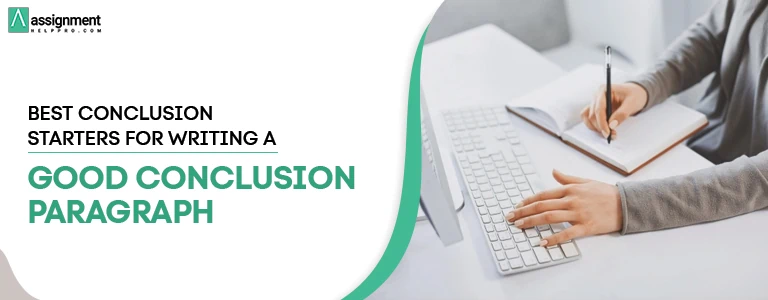
Most of the time, writers finish their essays quickly, and some writers forget to include a concluding section in their writing. Therefore, you must be careful to effectively conclude your essay or research paper with powerful sentences or statements in order to emphasize your ideas on a particular topic.
Remember, when you write a strong paragraph , then obviously the key points that you have included in the last section of your essay or paper will easily get stored in your readers’ minds. If your conclusion is weak, then your readers will forget it quickly.
Occasionally, readers will regret selecting your topic for reading because of your poor conclusion. So, when you write the conclusion statement for an essay or research paper, remember the important steps and advice for writing a good conclusion and then craft it accordingly.
How to Write an Excellent Conclusion Paragraph?
Till now, we saw the significance of a good conclusion paragraph. Now, let us step forward and learn how to write a good conclusion paragraph.
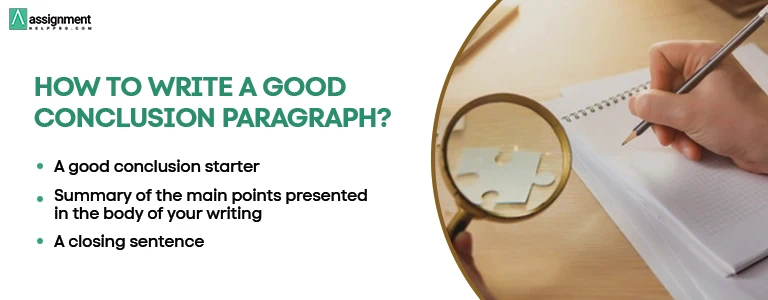
Seriously, you can’t impress your readers if you don’t know to write a good conclusion. In order to conclude your essay powerfully, you can either ask provocative questions or include quotes, a warning, or a call to action.
Not just for essays, a specific structure should also be followed for writing a strong conclusion too. Your conclusion will be thoughtful and impressive only if you stick to a general conclusion outline or a standard conclusion structure containing the following elements.
- A good conclusion starter
- Summary of the main points presented in the body of your writing
- A closing sentence
Points to Remember While Writing a Conclusion Paragraph
- Never introduce a new idea or topic in your conclusion paragraph that was not covered in the introduction and body of your essay or research paper.
- Don’t stress the insignificant parts of your essay. Always make an effort to draw attention to the main points you want your readers to understand.
- The points made in the conclusion paragraph ought to be easy to remember for the readers.
What are Conclusion Starters?
The conclusion starters are the opening sentence in your concluding paragraph. It generally acts as a link between the body and the conclusion paragraph.
One of the significant things that should be used when writing a good conclusion paragraph of your essay is the conclusion starters. With the help of conclusion starters, you can inform your readers that you are about to wrap up your writing.
There are plenty of conclusion starters available in the English language. Usually, the concluding sentences’ paragraph structure will always vary depending on your writing type. However, the conclusion starters are the same for the essay types like compare and contrast, narratives, descriptive, and argumentative.

List of the Best Conclusion Starters for Final Paragraphs
Listed below are some of the best conclusion starter on time business news examples ideas that you can use while writing the conclusion paragraph of your essay.
Simple Conclusion Starter Words
- In conclusion
- All aspects considered
- In drawing to the closure
- The logical conclusion seems to be
- Considering the perspective of
- Thus, it can be restarted
- On considering the different facts presented in this work
- On the whole
Conclusion Starters for Essays and Speeches
- In my opinion
- Nevertheless
- As expressed
- With all these in mind
- In a nutshell
- Now that we know
- I think there is no option but to conclude
- For this reason
- When faced with the question of
- Given these points
- There is nothing else we can conclude but
Effective Conclusion Paragraph Starters for Students
- To summarize
- I conclude that
- To sum it all up
- To put it briefly
- As a result
- In the final analysis
- For the most part
- As a final point
- All things considered
- For these reasons
- So, I have come to the conclusion that
- To wrap it all up
Impressive Conclusion Starters
- The summative conclusion is that
- The broad conclusion
- The study concluded
- Towards this end
- After all, has been said
- I recommend that
- The informative conclusion is that
- Now you know why
- From now on
- Looking back
- I hope you can now learn that
- Last but not least
- In the future
- You should now consider it
- I think I have shown that
- Without doubt
- The time has come to
- I agree with that
Good Conclusion Starters for Research Paper
- As per the final analysis
- Based on the evidence presented
- As expected, the results signify
- Due to the result
- In light of these findings
- The data reveals
- As per the data, it can be indicated
- The significant revelations made by the study
- Unexpectedly the data revealed
- To assume from the data
- The result of this research showcases
- What the study reveals is
- On reviewing these findings it can be stated
- In the context of the concept
- While further research is competent
A Few More Powerful Conclusion Starters
- As I observe things
- At the end of the day
- After all, it has been told and done
- To reach the core of the heart.
- As per my perspective
- To make a long story short
- No one could have assumed that
- As the time comes to wrap up
- In a simple language
- As stated in the introduction
- I would like to say finally
- One final idea
- My conclusions are
- The data indicate that
- It is worth re-examining
- The nexus between
- As this paper demonstrates
- After discussing
- I’m looking forward to
- It is my conviction that
- My final bow is that
- It is my sincere belief that
- Through this research, we learn that
- My verdict is that
- The research proves that
- That was the conclusion reached
- The summative end is that
In the list mentioned above, we saw the various conclusion starters you can use to start a conclusion paragraph. No matter what your topic is, you can make your speech or write-up memorable for your audiences with the help of a great and effective conclusion. If you wish to add value to your writing, then make sure to use any good conclusion starters at the beginning of your conclusion paragraph.
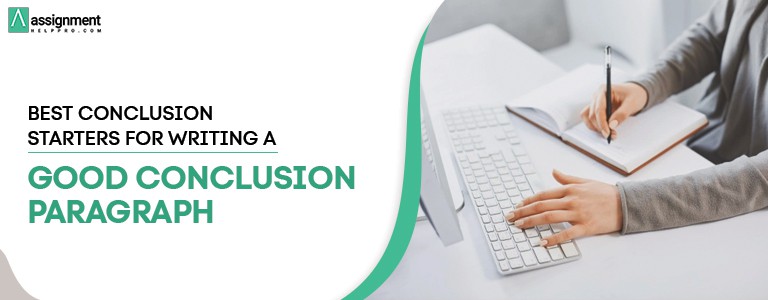
Related Post

110 Hard Words to Spell for Students and Adults

Learn How to Avoid Passive Voice in 3 Simple Steps

117 Best Greek Mythology Essay Topics For Students
About author.
Jacob Smith
I am an Academic Writer and have affection to share my knowledge through posts’. I do not feel tiredness while research and analyzing the things. Sometime, I write down hundred of research topics as per the students requirements. I want to share solution oriented content to the students.
Leave a Reply Cancel reply
You must be logged in to post a comment.
- Featured Posts
140 Unique Geology Research Topics to Focus On
200+ outstanding world history topics and ideas 2023, 190 excellent ap research topics and ideas, 150+ trending group discussion topics and ideas, 170 funny speech topics to blow the minds of audience, who invented exams learn the history of examination, how to focus on reading 15 effective tips for better concentration, what is a rhetorical analysis essay and how to write it, primary school teacher in australia- eligibility, job role, career options, and salary, 4 steps to build a flawless business letter format, get help instantly.
Raise Your Grades with Assignment Help Pro
Have a language expert improve your writing
Run a free plagiarism check in 10 minutes, generate accurate citations for free.
- Knowledge Base
- How to conclude an essay | Interactive example
How to Conclude an Essay | Interactive Example
Published on January 24, 2019 by Shona McCombes . Revised on July 23, 2023.
The conclusion is the final paragraph of your essay . A strong conclusion aims to:
- Tie together the essay’s main points
- Show why your argument matters
- Leave the reader with a strong impression
Your conclusion should give a sense of closure and completion to your argument, but also show what new questions or possibilities it has opened up.
This conclusion is taken from our annotated essay example , which discusses the history of the Braille system. Hover over each part to see why it’s effective.
Braille paved the way for dramatic cultural changes in the way blind people were treated and the opportunities available to them. Louis Braille’s innovation was to reimagine existing reading systems from a blind perspective, and the success of this invention required sighted teachers to adapt to their students’ reality instead of the other way around. In this sense, Braille helped drive broader social changes in the status of blindness. New accessibility tools provide practical advantages to those who need them, but they can also change the perspectives and attitudes of those who do not.
Instantly correct all language mistakes in your text
Upload your document to correct all your mistakes in minutes

Table of contents
Step 1: return to your thesis, step 2: review your main points, step 3: show why it matters, what shouldn’t go in the conclusion, more examples of essay conclusions, other interesting articles, frequently asked questions about writing an essay conclusion.
To begin your conclusion, signal that the essay is coming to an end by returning to your overall argument.
Don’t just repeat your thesis statement —instead, try to rephrase your argument in a way that shows how it has been developed since the introduction.
Here's why students love Scribbr's proofreading services
Discover proofreading & editing
Next, remind the reader of the main points that you used to support your argument.
Avoid simply summarizing each paragraph or repeating each point in order; try to bring your points together in a way that makes the connections between them clear. The conclusion is your final chance to show how all the paragraphs of your essay add up to a coherent whole.
To wrap up your conclusion, zoom out to a broader view of the topic and consider the implications of your argument. For example:
- Does it contribute a new understanding of your topic?
- Does it raise new questions for future study?
- Does it lead to practical suggestions or predictions?
- Can it be applied to different contexts?
- Can it be connected to a broader debate or theme?
Whatever your essay is about, the conclusion should aim to emphasize the significance of your argument, whether that’s within your academic subject or in the wider world.
Try to end with a strong, decisive sentence, leaving the reader with a lingering sense of interest in your topic.
The easiest way to improve your conclusion is to eliminate these common mistakes.
Don’t include new evidence
Any evidence or analysis that is essential to supporting your thesis statement should appear in the main body of the essay.
The conclusion might include minor pieces of new information—for example, a sentence or two discussing broader implications, or a quotation that nicely summarizes your central point. But it shouldn’t introduce any major new sources or ideas that need further explanation to understand.
Don’t use “concluding phrases”
Avoid using obvious stock phrases to tell the reader what you’re doing:
- “In conclusion…”
- “To sum up…”
These phrases aren’t forbidden, but they can make your writing sound weak. By returning to your main argument, it will quickly become clear that you are concluding the essay—you shouldn’t have to spell it out.
Don’t undermine your argument
Avoid using apologetic phrases that sound uncertain or confused:
- “This is just one approach among many.”
- “There are good arguments on both sides of this issue.”
- “There is no clear answer to this problem.”
Even if your essay has explored different points of view, your own position should be clear. There may be many possible approaches to the topic, but you want to leave the reader convinced that yours is the best one!
Prevent plagiarism. Run a free check.
- Argumentative
- Literary analysis
This conclusion is taken from an argumentative essay about the internet’s impact on education. It acknowledges the opposing arguments while taking a clear, decisive position.
The internet has had a major positive impact on the world of education; occasional pitfalls aside, its value is evident in numerous applications. The future of teaching lies in the possibilities the internet opens up for communication, research, and interactivity. As the popularity of distance learning shows, students value the flexibility and accessibility offered by digital education, and educators should fully embrace these advantages. The internet’s dangers, real and imaginary, have been documented exhaustively by skeptics, but the internet is here to stay; it is time to focus seriously on its potential for good.
This conclusion is taken from a short expository essay that explains the invention of the printing press and its effects on European society. It focuses on giving a clear, concise overview of what was covered in the essay.
The invention of the printing press was important not only in terms of its immediate cultural and economic effects, but also in terms of its major impact on politics and religion across Europe. In the century following the invention of the printing press, the relatively stationary intellectual atmosphere of the Middle Ages gave way to the social upheavals of the Reformation and the Renaissance. A single technological innovation had contributed to the total reshaping of the continent.
This conclusion is taken from a literary analysis essay about Mary Shelley’s Frankenstein . It summarizes what the essay’s analysis achieved and emphasizes its originality.
By tracing the depiction of Frankenstein through the novel’s three volumes, I have demonstrated how the narrative structure shifts our perception of the character. While the Frankenstein of the first volume is depicted as having innocent intentions, the second and third volumes—first in the creature’s accusatory voice, and then in his own voice—increasingly undermine him, causing him to appear alternately ridiculous and vindictive. Far from the one-dimensional villain he is often taken to be, the character of Frankenstein is compelling because of the dynamic narrative frame in which he is placed. In this frame, Frankenstein’s narrative self-presentation responds to the images of him we see from others’ perspectives. This conclusion sheds new light on the novel, foregrounding Shelley’s unique layering of narrative perspectives and its importance for the depiction of character.
If you want to know more about AI tools , college essays , or fallacies make sure to check out some of our other articles with explanations and examples or go directly to our tools!
- Ad hominem fallacy
- Post hoc fallacy
- Appeal to authority fallacy
- False cause fallacy
- Sunk cost fallacy
College essays
- Choosing Essay Topic
- Write a College Essay
- Write a Diversity Essay
- College Essay Format & Structure
- Comparing and Contrasting in an Essay
(AI) Tools
- Grammar Checker
- Paraphrasing Tool
- Text Summarizer
- AI Detector
- Plagiarism Checker
- Citation Generator
Your essay’s conclusion should contain:
- A rephrased version of your overall thesis
- A brief review of the key points you made in the main body
- An indication of why your argument matters
The conclusion may also reflect on the broader implications of your argument, showing how your ideas could applied to other contexts or debates.
For a stronger conclusion paragraph, avoid including:
- Important evidence or analysis that wasn’t mentioned in the main body
- Generic concluding phrases (e.g. “In conclusion…”)
- Weak statements that undermine your argument (e.g. “There are good points on both sides of this issue.”)
Your conclusion should leave the reader with a strong, decisive impression of your work.
The conclusion paragraph of an essay is usually shorter than the introduction . As a rule, it shouldn’t take up more than 10–15% of the text.
Cite this Scribbr article
If you want to cite this source, you can copy and paste the citation or click the “Cite this Scribbr article” button to automatically add the citation to our free Citation Generator.
McCombes, S. (2023, July 23). How to Conclude an Essay | Interactive Example. Scribbr. Retrieved July 22, 2024, from https://www.scribbr.com/academic-essay/conclusion/
Is this article helpful?
Shona McCombes
Other students also liked, how to write an essay introduction | 4 steps & examples, how to write a thesis statement | 4 steps & examples, example of a great essay | explanations, tips & tricks, what is your plagiarism score.
In a short paper—even a research paper—you don’t need to provide an exhaustive summary as part of your conclusion. But you do need to make some kind of transition between your final body paragraph and your concluding paragraph. This may come in the form of a few sentences of summary. Or it may come in the form of a sentence that brings your readers back to your thesis or main idea and reminds your readers where you began and how far you have traveled.
So, for example, in a paper about the relationship between ADHD and rejection sensitivity, Vanessa Roser begins by introducing readers to the fact that researchers have studied the relationship between the two conditions and then provides her explanation of that relationship. Here’s her thesis: “While socialization may indeed be an important factor in RS, I argue that individuals with ADHD may also possess a neurological predisposition to RS that is exacerbated by the differing executive and emotional regulation characteristic of ADHD.”
In her final paragraph, Roser reminds us of where she started by echoing her thesis: “This literature demonstrates that, as with many other conditions, ADHD and RS share a delicately intertwined pattern of neurological similarities that is rooted in the innate biology of an individual’s mind, a connection that cannot be explained in full by the behavioral mediation hypothesis.”
Highlight the “so what”
At the beginning of your paper, you explain to your readers what’s at stake—why they should care about the argument you’re making. In your conclusion, you can bring readers back to those stakes by reminding them why your argument is important in the first place. You can also draft a few sentences that put those stakes into a new or broader context.
In the conclusion to her paper about ADHD and RS, Roser echoes the stakes she established in her introduction—that research into connections between ADHD and RS has led to contradictory results, raising questions about the “behavioral mediation hypothesis.”
She writes, “as with many other conditions, ADHD and RS share a delicately intertwined pattern of neurological similarities that is rooted in the innate biology of an individual’s mind, a connection that cannot be explained in full by the behavioral mediation hypothesis.”
Leave your readers with the “now what”
After the “what” and the “so what,” you should leave your reader with some final thoughts. If you have written a strong introduction, your readers will know why you have been arguing what you have been arguing—and why they should care. And if you’ve made a good case for your thesis, then your readers should be in a position to see things in a new way, understand new questions, or be ready for something that they weren’t ready for before they read your paper.
In her conclusion, Roser offers two “now what” statements. First, she explains that it is important to recognize that the flawed behavioral mediation hypothesis “seems to place a degree of fault on the individual. It implies that individuals with ADHD must have elicited such frequent or intense rejection by virtue of their inadequate social skills, erasing the possibility that they may simply possess a natural sensitivity to emotion.” She then highlights the broader implications for treatment of people with ADHD, noting that recognizing the actual connection between rejection sensitivity and ADHD “has profound implications for understanding how individuals with ADHD might best be treated in educational settings, by counselors, family, peers, or even society as a whole.”
To find your own “now what” for your essay’s conclusion, try asking yourself these questions:
- What can my readers now understand, see in a new light, or grapple with that they would not have understood in the same way before reading my paper? Are we a step closer to understanding a larger phenomenon or to understanding why what was at stake is so important?
- What questions can I now raise that would not have made sense at the beginning of my paper? Questions for further research? Other ways that this topic could be approached?
- Are there other applications for my research? Could my questions be asked about different data in a different context? Could I use my methods to answer a different question?
- What action should be taken in light of this argument? What action do I predict will be taken or could lead to a solution?
- What larger context might my argument be a part of?
What to avoid in your conclusion
- a complete restatement of all that you have said in your paper.
- a substantial counterargument that you do not have space to refute; you should introduce counterarguments before your conclusion.
- an apology for what you have not said. If you need to explain the scope of your paper, you should do this sooner—but don’t apologize for what you have not discussed in your paper.
- fake transitions like “in conclusion” that are followed by sentences that aren’t actually conclusions. (“In conclusion, I have now demonstrated that my thesis is correct.”)
- picture_as_pdf Conclusions
Still have questions? Leave a comment
Add Comment
Checklist: Dissertation Proposal
Enter your email id to get the downloadable right in your inbox!
Examples: Edited Papers
Need editing and proofreading services, how to write a conclusion for an essay (examples included).

- Tags: Essay , Essay Writing
Condensing a 1,000-plus-word essay into a neat little bundle may seem like a Herculean task. You must summarize all your findings and justify their importance within a single paragraph.
But, when you discover the formula for writing a conclusion paragraph, things get much simpler!
But, how to write a conclusion paragraph for an essay, and more importantly, how to make it impactful enough? Through this article, we will walk you through the process of constructing a powerful conclusion that leaves a lingering impression on readers’ minds. We will also acquaint you with essay conclusion examples for different types of essays.
Score high with our expert essay editing services! Get started
Let’s start from the beginning: How can you write a conclusion for an essay?
How to write a conclusion for an essay
In order to write an effective conclusion, you must first understand what is a conclusion in an essay. It is not just the summary of the main points of your essay. A well-written conclusion effectively ties together the main ideas of your essay and also pays heed to their broader implications. The objectives of your concluding paragraph are as follows:
- Highlight the significance of your essay topic
- Tie together the key points of your essay
- Leave the reader with something to ponder about
A good essay conclusion begins with a modified thesis statement that is altered on the basis of the information stated throughout the essay. It then ties together all the main points of the essay and ends with a clincher that highlights the broader implications of your thesis statement.
Now that we’ve understood the basics of how to conclude an essay, let’s understand the key aspects of a good conclusion paragraph.
1. Restating your thesis statement
If you want to understand how to start a conclusion, you must realize that involves more than just restating the thesis statement word for word. Your thesis statement needs to be updated and expanded upon as per the information provided in your essay.
There are many ways to start a conclusion. One such method could be to start with the revised version of your thesis statement that hints to the significance of your argument. After this, your conclusion paragraph can organically move on to your arguments in the essay.
Let’s take a look at an effective way of writing a conclusion for an essay:
If the following claim is your thesis statement:
Virtual reality (VR) is undeniably altering the perception of reality by revolutionizing various industries, reshaping human experiences, and challenging traditional notions of what is real.
The restated thesis statement will be as follows:
Our analysis has substantiated the claim that virtual reality (VR) is significantly transforming the way we perceive reality. It has revolutionized industries, reshaped human experiences, and challenged traditional notions of reality.
2. Tying together the main points
Tying together all the main points of your essay does not mean simply summarizing them in an arbitrary manner. The key is to link each of your main essay points in a coherent structure. One point should follow the other in a logical format.
The goal is to establish how each of these points connects to the message of your essay as a whole. You can also take the help of powerful quotes or impactful reviews to shed a unique light on your essay.
Let’s take a look at an example:
VR presents a new paradigm where the distinction between the real and the virtual becomes increasingly blurred. As users dive into immersive virtual worlds, they are confronted with questions about the nature of reality, perception, and the boundaries of human consciousness.
3. Constructing an impactful conclusion
Most of us are confused about how to end an essay with a bang. The answer is quite simple! The final line of your essay should be impactful enough to create a lasting impression on the reader. More importantly, it should also highlight the significance of your essay topic. This could mean the broader implications of your topic, either in your field of study or in general.
Optionally, you could also try to end your essay on an optimistic note that motivates or encourages the reader. If your essay is about eradicating a problem in society, highlight the positive effects achieved by the eradication of that problem.
Here’s an example of how to end an essay:
In a world where virtual boundaries dissolve, VR is the catalyst that reshapes our perception of reality, forever altering the landscape of the human experience.
Here’s a combined version of all three aspects:
Our analysis has substantiated the claim that Virtual Reality (VR) is significantly transforming how we perceive reality. It has revolutionized industries, reshaped human experiences, and challenged traditional notions of reality. It presents a new paradigm where the distinction between the real and the virtual becomes increasingly blurred. As users dive into immersive virtual worlds, they are confronted with questions about the nature of reality, perception, and the boundaries of human consciousness. In a world where virtual boundaries dissolve, it is the catalyst that reshapes our perception of reality, forever altering the landscape of the human experience.
Now that we’ve understood the structure of a concluding paragraph, let’s look at what to avoid while writing a conclusion.
What to avoid in your conclusion paragraph
When learning how to write a conclusion for an essay, you must also know what to avoid. You want to strengthen your argument with the help of a compelling conclusion paragraph, and not undermine it by confusing the reader.
Let’s take a look at a few strategies to avoid in your essay conclusion:
1. Avoid including new evidence
The conclusion should not introduce new information but rather strengthen the arguments that are already made. If you come across any unique piece of information regarding your essay topic, accommodate it into your body paragraphs rather than stuffing it into your conclusion.
Including new, contradictory information in the concluding paragraph not only confuses the reader but also weakens your argument. You may include a powerful quote that strengthens the message of your essay, or an example that sheds light on the importance of your argument. However, this does not include introducing a completely new argument or making a unique point.
2. Avoid the use of concluding phrases
Your conclusion should hint towards your essay coming to an end, instead of blatantly stating the obvious. Blatant concluding statements undermine the quality of your essay, making it clumsy and amateurish. They also significantly diminish the quality of your arguments.
It is a good idea to avoid the following statements while concluding your essay:
- In conclusion,
- In summary,
While using these statements may not be incorrect per se, hinting towards a conclusion creates a better impression on the reader rather than blatantly stating it.
Here are more effective statements you could use:
- Let this essay serve as a catalyst for…
- As we navigate the intricacies of this multifaceted topic, remember…
- As I bid farewell to this subject…
3. Don’t undermine your argument
Although there might be several points of view regarding your essay topic, it is crucial that you stick to your own. You may have stated and refuted other points of view in your body paragraphs.
However, your conclusion is simply meant to strengthen your main argument. Mentioning other points of view in your essay conclusion, not only weakens your argument but also creates a poor impression of your essay.
Here are a few phrases you should avoid in your essay conclusion:
- There are several methods to approach this topic.
- There are plenty of good points for both sides of the argument.
- There is no clear solution to this problem.
Examples of essay conclusions
Different types of essays make use of different forms of conclusions. The critical question of “how to start a conclusion paragraph” has many different answers. To help you further, we’ve provided a few good conclusions for essays that are based on the four main essay types.
1. Narrative essay conclusion
The following essay conclusion example elaborates on the narrator’s unique experience with homeschooling.
- Restated thesis statement
- Body paragraph summary
- Closing statement
My experience with homeschooling has been a journey that has shaped me in profound ways. Through the challenges and triumphs, I have come to appreciate the unique advantages and personal growth that homeschooling can offer. As I reflect on my journey, I am reminded of the transformative power of this alternative education approach. It has empowered me to take ownership of my education, nurture my passions, and develop skills that extend far beyond the confines of academic achievement. Whether in traditional classrooms or homeschooling environments, it is through embracing and nurturing the unique potential within each of us that we can truly thrive and make a lasting impact on the world.
2. Descriptive essay conclusion
The following essay conclusion example elaborates on the narrator’s bond with their cat.
The enchanting presence that my cat has cannot be ignored, captivating my heart with her grace, charm, and unconditional love. Through the moments of playfulness, companionship, and affection, she has become an irreplaceable member of my family. As I continue to cherish the memories and lessons learned from her, I am reminded of the extraordinary power of the human-animal bond. In their company, we find solace, companionship, and a love that transcends words. In a world that can be challenging and tumultuous, never underestimate the profound impact that animals can have on our lives. In their presence, not only do we find love but also a profound sense of connection.
3. Argumentative essay conclusion
Here’s an essay conclusion example that elaborates on the marginalization of, and acute intolerance towards, LGBTQ+ individuals.
The journey toward equality for LGBTQ+ individuals is an ongoing battle that demands our unwavering commitment to justice and inclusion. It is evident that while progress has been made, the journey toward equality for these individuals is far from complete. It demands our continued advocacy, activism, and support for legislative change, societal acceptance, and the creation of inclusive environments. The struggle for LGBTQ+ equality is a fight for the very essence of human dignity and the recognition of our shared humanity. It is a battle that requires our collective efforts, determination, and an unyielding belief in the fundamental principles of equality and justice.
4. Expository essay conclusion
This example of an essay conclusion revolves around a psychological phenomenon named the bandwagon effect and examines its potential ill effects on society:
The bandwagon effect in psychology is a fascinating phenomenon that sheds light on the powerful influence of social conformity on individual behavior and decision-making processes. This effect serves as a reminder of the inherently social nature of human beings and the power of social influence in shaping our thoughts, attitudes, and actions. It underscores the importance of critical thinking, individual autonomy, and the ability to resist the pressure of conformity. By understanding its mechanisms and implications, we can guard against its potential pitfalls and actively foster independent thought and decision-making, also contributing to a more enlightened and progressive society.
Now that you’ve taken a closer look at different conclusions for essays, it’s time to put this knowledge to good use. If you need to take your essay up a notch and score high, professional essay editing services are your best bet.
Happy writing!
Frequently Asked Questions
How do you write a good conclusion for an essay, what comes first in a conclusion, what is the best conclusion of an essay.
Found this article helpful?
Leave a Comment: Cancel reply
Your email address will not be published.
Your vs. You’re: When to Use Your and You’re
Your organization needs a technical editor: here’s why, your guide to the best ebook readers in 2024, writing for the web: 7 expert tips for web content writing.
Subscribe to our Newsletter
Get carefully curated resources about writing, editing, and publishing in the comfort of your inbox.
How to Copyright Your Book?
If you’ve thought about copyrighting your book, you’re on the right path.
© 2024 All rights reserved
- Terms of service
- Privacy policy
- Self Publishing Guide
- Pre-Publishing Steps
- Fiction Writing Tips
- Traditional Publishing
- Additional Resources
- Dissertation Writing Guide
- Essay Writing Guide
- Academic Writing and Publishing
- Citation and Referencing
- Partner with us
- Annual report
- Website content
- Marketing material
- Job Applicant
- Cover letter
- Resource Center
- Case studies

How to Write a Good Conclusion Paragraph (+30 Examples)
A good conclusion paragraph is the lasting impression you want to leave with your reader.
Here is a quick summary of how to write a good conclusion paragraph:
Write a good conclusion paragraph by summarizing key points, restating your thesis, and providing a final thought or call to action. Ensure it wraps up your main ideas, reinforces your argument, and leaves the reader with something to ponder.
This ultimate guide will walk you through the steps to craft an effective conclusion, along with 30 examples to inspire you.
5 Steps for Writing a Good Conclusion Paragraph

Table of Contents
There are five main steps to writing a good conclusion.
Let’s go through each step
1. Understand the Purpose
The conclusion is your final opportunity to leave an impact.
It should tie together your main ideas, reinforce your message, and give the reader a sense of closure.
Wrap Up Your Main Ideas
The conclusion should succinctly wrap up the main points of your writing. Think of it as a summary that captures the essence of your arguments without going into detailed explanations.
This helps reinforce what you have discussed and ensures that the reader remembers the core message.
Reinforce Your Thesis
Your thesis statement is the foundation of your writing.
In the conclusion, restate it in a new way to reinforce your central argument. This reminds the reader of the purpose of your writing and underscores its significance.
Give a Sense of Closure
A good conclusion gives a sense of closure to the reader. It signals that the discussion has come to an end and that all points have been addressed. This helps the reader feel that the piece is complete and that their time was well-spent.
Leave the Reader with Something to Think About
The best conclusions go beyond merely summarizing the content.
They leave the reader with a final thought or reflection that stays with them. This could be a call to action, a prediction about the future, or a thought-provoking question that encourages further reflection on the topic.
2. Summarize Key Points
Briefly summarize the key points discussed in the body of your text.
Avoid introducing new information. This helps the reader recall the main ideas.
Brief Summary
The summary should be concise and to the point. Highlight the main ideas discussed in your writing without going into detailed explanations. This helps refresh the reader’s memory of your key points.
Avoid New Information
Introducing new information in the conclusion can confuse the reader. The conclusion is not the place to present new arguments or data. Stick to summarizing what has already been discussed.
Recall Main Ideas
Summarizing the key points helps the reader recall the main ideas of your writing. This reinforces the message and ensures that the reader takes away the most important information from your piece.
“In conclusion, adopting sustainable practices, reducing waste, and promoting renewable energy are essential steps towards a greener future.”
3. Restate the Thesis
Restate your thesis in a new way. This reinforces your argument without sounding repetitive.
Restate, Don’t Repeat
Restating the thesis means expressing it in a new way.
Avoid repeating it verbatim.
Instead, rephrase it to reinforce your argument and show that you have successfully argued your point throughout the piece.
Reinforce the Argument
Restating the thesis helps reinforce your central argument. It reminds the reader of the purpose of your writing and underscores its significance.
Provide Closure Restating the thesis in the conclusion gives a sense of closure.
It signals that the discussion has come full circle and that you have addressed your initial argument.
“By implementing these strategies, we can significantly reduce our carbon footprint and protect our planet for future generations.”
4. Provide a Final Thought
Offer a final thought or reflection to leave a lasting impression. This could be a call to action, a prediction, or a thought-provoking question.
Final Thought or Reflection
A final thought or reflection can leave a lasting impression on the reader.
It shows that you are not just summarizing your points but also offering a deeper insight or perspective.
Call to Action
A call to action encourages the reader to take the next step.
It motivates them to act based on the information or arguments presented in your writing.
Prediction or Question
A prediction about the future or a thought-provoking question can engage the reader and encourage further reflection. This leaves the reader with something to think about even after they have finished reading.
“As we move forward, it’s crucial to remember that every small effort counts. Together, we can make a difference.”
5. Use a Call to Action (if applicable)
If your piece is meant to persuade or encourage action, include a call to action. This motivates the reader to take the next step.
Motivate the Reader
A call to action motivates the reader to take the next step.
It encourages them to act based on the information or arguments presented in your writing.
Encourage Action
Including a call to action is especially important in persuasive writing. It encourages the reader to act on the information provided and make a change or take a specific action.
Provide Clear Steps
A good call to action provides clear steps for the reader to follow.
It should be specific and actionable, guiding the reader on what to do next.
“Join us in making a positive change. Start today by reducing your plastic use and spreading awareness about environmental conservation.”
Check out this video about how to write a good conclusion:
How to Write a Good Conclusion for an Essay
Writing a good conclusion for an essay involves summarizing your main points, restating your thesis, and providing a final thought or reflection.
Here’s how:
- Summarize Main Points : Briefly recap the key points discussed in the body of your essay.
- Restate Thesis : Paraphrase your thesis statement to reinforce your argument.
- Final Thought : Offer a final insight, question, or call to action to leave a lasting impression.
This approach ensures your essay feels complete and leaves the reader with a clear understanding of your argument.
How to Write a Good Conclusion for an Argumentative Essay
A strong conclusion for an argumentative essay should not only summarize the main points and restate the thesis but also emphasize the importance of your argument.
Follow these steps:
- Summarize Arguments : Briefly outline the main arguments presented.
- Restate Thesis : Rephrase your thesis to highlight its significance.
- Address Counterarguments : Acknowledge opposing viewpoints and reinforce why your argument is stronger.
- Call to Action : Encourage the reader to take action or reconsider their position.
How to Write a Good Conclusion for a Research Paper
Crafting a good conclusion for a research paper involves summarizing your findings, discussing their implications, and suggesting future research.
Here’s a guide:
- Summarize Findings : Recap the key results of your research.
- Discuss Implications : Explain the significance of your findings and how they contribute to the field.
- Restate Research Question : Reiterate the research question and how your findings address it.
- Suggest Future Research : Propose areas for further investigation.
This format provides a comprehensive and thoughtful conclusion that underscores the importance of your research and its potential impact.
30 Examples of Good Conclusion Paragraphs
Let’s explore some good examples of good conclusions.
Example 1: Environmental Essay
“In conclusion, the preservation of our natural resources is not just a necessity but a responsibility we owe to future generations. By taking small steps today, we can ensure a healthier planet tomorrow.”
Example 2: Technology Article
“As we embrace the advancements in technology, it is vital to remain vigilant about privacy and security. Staying informed and proactive can help us navigate the digital landscape safely.”
Example 3: Health and Wellness Blog
“Ultimately, achieving a balanced lifestyle requires dedication and mindfulness. By prioritizing our well-being, we can lead healthier and more fulfilling lives.”
Example 4: Business Report
“In summary, the market analysis indicates a positive trend for our product. With strategic planning and execution, we can capitalize on these opportunities and drive growth.”
Example 5: Education Essay
“In the end, fostering a love for learning in students is the key to their success. By creating engaging and supportive educational environments, we can inspire the next generation of leaders.”
Example 6: Travel Blog
“To conclude, exploring new destinations enriches our lives and broadens our perspectives. Embrace the adventure and discover the beauty of our world.”
Example 7: Personal Development Article
“In the final analysis, personal growth is a lifelong journey. Embrace challenges, learn from experiences, and continue striving to become the best version of yourself.”
Example 8: Marketing Case Study
“In closing, the data clearly shows that targeted marketing strategies significantly improve customer engagement and sales. By refining our approach, we can achieve even greater success.”
Example 9: Historical Analysis
“In conclusion, the events of the past continue to shape our present and future. Understanding history is essential to making informed decisions and avoiding past mistakes.”
Example 10: Scientific Research Paper
“Ultimately, the findings of this study contribute to our understanding of the subject and open the door for further research. Continued exploration in this field is vital for advancing knowledge.”
Example 11: Political Commentary
“In the end, civic engagement is crucial for a functioning democracy. Stay informed, participate in discussions, and exercise your right to vote.”
Example 12: Fashion Blog
“To wrap up, fashion is a powerful form of self-expression. Embrace your unique style and let your wardrobe reflect your personality.”
Example 13: Food Blog
“In conclusion, cooking at home not only saves money but also allows you to experiment with flavors and ingredients. Start your culinary journey today and discover the joys of homemade meals.”
Example 14: Sports Article
“Ultimately, teamwork and perseverance are the foundations of success in sports. Keep pushing your limits and strive for excellence on and off the field.”
Example 15: Literature Analysis
“In summary, the themes explored in this novel resonate with readers and offer valuable insights into the human condition. Its timeless message continues to inspire and provoke thought.”
Example 16: Parenting Blog
“In the end, raising children requires patience, love, and commitment. Cherish the moments, and remember that every effort you make shapes their future.”
Example 17: Finance Article
“To conclude, financial planning is essential for securing your future. Start today by setting clear goals and creating a budget that aligns with your aspirations.”
Example 18: Career Advice Blog
“In conclusion, building a successful career takes time and dedication. Stay focused, seek opportunities for growth, and never stop learning.”
Example 19: Fitness Blog
“Ultimately, regular exercise and a balanced diet are key to maintaining a healthy lifestyle. Stay motivated, and remember that every step counts towards your fitness goals.”
Example 20: DIY Blog
“In summary, DIY projects are a rewarding way to personalize your space and learn new skills. Get creative and start your next project today.”
Example 21: Relationship Advice
“In the end, strong relationships are built on communication, trust, and mutual respect. Nurture your connections and strive for harmony in your interactions.”
Example 22: Pet Care Blog
“To wrap up, responsible pet ownership involves understanding your pet’s needs and providing them with a loving home. Invest in their well-being, and they’ll reward you with unconditional love.”
Example 23: Environmental Science Paper
“In conclusion, addressing climate change requires global cooperation and immediate action. Every effort counts, and together we can create a sustainable future.”
Example 24: Technology Review
“Ultimately, this gadget offers impressive features that enhance convenience and efficiency. Consider it for your next tech upgrade.”
Example 25: Psychology Article
“In summary, understanding human behavior is crucial for improving mental health and well-being. Continue exploring this fascinating field for more insights.”
Example 26: Gardening Blog
“In the end, gardening is a therapeutic and rewarding hobby that connects us with nature. Start your garden today and enjoy the benefits of fresh produce and beautiful blooms.”
Example 27: Home Improvement Article
“To conclude, home improvement projects can significantly enhance your living space and increase property value. Plan carefully and enjoy the transformation.”
Example 28: Social Media Marketing
“In conclusion, effective social media marketing requires consistency, creativity, and engagement. Develop a strategy that resonates with your audience and watch your brand grow.”
Example 29: Automotive Review
“Ultimately, this vehicle combines performance, style, and safety. Take it for a test drive and experience its capabilities firsthand.”
Example 30: Music Blog
“In summary, music has the power to evoke emotions and bring people together. Explore different genres and find the soundtrack to your life.”
Tips for Writing a Strong Conclusion
Here are some simple but good tips for writing a powerful conclusion:
- Keep it Concise – A good conclusion should be short and to the point. Avoid unnecessary details and focus on wrapping up your main ideas.
- Use Clear Language – Ensure your language is clear and easy to understand. Avoid jargon and complex sentences.
- Be Consistent – Maintain the same tone and style as the rest of your text. Consistency helps create a seamless reading experience.
- End on a Positive Note – Whenever possible, end with a positive or uplifting message. This leaves the reader with a good impression.
Common Mistakes to Avoid
There are some common mistakes that many writers make when crafting their conclusions.
- Introducing New Information – Don’t introduce new ideas or arguments in the conclusion. This can confuse the reader and dilute your main points.
- Being Vague – Avoid vague statements that don’t add value. Be specific and clear in your summary.
- Repetitiveness – Don’t repeat the same points over and over. Restate your thesis and key points in a new way.
- Ignoring the Thesis – Make sure to tie your conclusion back to your thesis. This reinforces your argument and gives a sense of closure.
Final Thoughts: How to Write a Good Conclusion Paragraph
Writing a good conclusion paragraph is essential for creating a cohesive and impactful piece of writing.
By summarizing key points, restating the thesis, providing a final thought, and using a call to action, you can craft a strong conclusion that leaves a lasting impression.
Use the 30 examples provided to inspire your own writing and ensure your conclusions are always effective and engaging.
Read This Next:
- How to Write an Introduction Paragraph [50+ Examples]
- How to Write a Paragraph [Ultimate Guide + Examples]
- Types of Evidence in Writing [Ultimate Guide + Examples]
- Narrative Writing Graphic Organizer [Guide + Free Templates]
- How to Write a Hook (40 Good Examples)

Conclusions
What this handout is about.
This handout will explain the functions of conclusions, offer strategies for writing effective ones, help you evaluate conclusions you’ve drafted, and suggest approaches to avoid.
About conclusions
Introductions and conclusions can be difficult to write, but they’re worth investing time in. They can have a significant influence on a reader’s experience of your paper.
Just as your introduction acts as a bridge that transports your readers from their own lives into the “place” of your analysis, your conclusion can provide a bridge to help your readers make the transition back to their daily lives. Such a conclusion will help them see why all your analysis and information should matter to them after they put the paper down.
Your conclusion is your chance to have the last word on the subject. The conclusion allows you to have the final say on the issues you have raised in your paper, to synthesize your thoughts, to demonstrate the importance of your ideas, and to propel your reader to a new view of the subject. It is also your opportunity to make a good final impression and to end on a positive note.
Your conclusion can go beyond the confines of the assignment. The conclusion pushes beyond the boundaries of the prompt and allows you to consider broader issues, make new connections, and elaborate on the significance of your findings.
Your conclusion should make your readers glad they read your paper. Your conclusion gives your reader something to take away that will help them see things differently or appreciate your topic in personally relevant ways. It can suggest broader implications that will not only interest your reader, but also enrich your reader’s life in some way. It is your gift to the reader.
Strategies for writing an effective conclusion
One or more of the following strategies may help you write an effective conclusion:
- Play the “So What” Game. If you’re stuck and feel like your conclusion isn’t saying anything new or interesting, ask a friend to read it with you. Whenever you make a statement from your conclusion, ask the friend to say, “So what?” or “Why should anybody care?” Then ponder that question and answer it. Here’s how it might go: You: Basically, I’m just saying that education was important to Douglass. Friend: So what? You: Well, it was important because it was a key to him feeling like a free and equal citizen. Friend: Why should anybody care? You: That’s important because plantation owners tried to keep slaves from being educated so that they could maintain control. When Douglass obtained an education, he undermined that control personally. You can also use this strategy on your own, asking yourself “So What?” as you develop your ideas or your draft.
- Return to the theme or themes in the introduction. This strategy brings the reader full circle. For example, if you begin by describing a scenario, you can end with the same scenario as proof that your essay is helpful in creating a new understanding. You may also refer to the introductory paragraph by using key words or parallel concepts and images that you also used in the introduction.
- Synthesize, don’t summarize. Include a brief summary of the paper’s main points, but don’t simply repeat things that were in your paper. Instead, show your reader how the points you made and the support and examples you used fit together. Pull it all together.
- Include a provocative insight or quotation from the research or reading you did for your paper.
- Propose a course of action, a solution to an issue, or questions for further study. This can redirect your reader’s thought process and help them to apply your info and ideas to their own life or to see the broader implications.
- Point to broader implications. For example, if your paper examines the Greensboro sit-ins or another event in the Civil Rights Movement, you could point out its impact on the Civil Rights Movement as a whole. A paper about the style of writer Virginia Woolf could point to her influence on other writers or on later feminists.
Strategies to avoid
- Beginning with an unnecessary, overused phrase such as “in conclusion,” “in summary,” or “in closing.” Although these phrases can work in speeches, they come across as wooden and trite in writing.
- Stating the thesis for the very first time in the conclusion.
- Introducing a new idea or subtopic in your conclusion.
- Ending with a rephrased thesis statement without any substantive changes.
- Making sentimental, emotional appeals that are out of character with the rest of an analytical paper.
- Including evidence (quotations, statistics, etc.) that should be in the body of the paper.
Four kinds of ineffective conclusions
- The “That’s My Story and I’m Sticking to It” Conclusion. This conclusion just restates the thesis and is usually painfully short. It does not push the ideas forward. People write this kind of conclusion when they can’t think of anything else to say. Example: In conclusion, Frederick Douglass was, as we have seen, a pioneer in American education, proving that education was a major force for social change with regard to slavery.
- The “Sherlock Holmes” Conclusion. Sometimes writers will state the thesis for the very first time in the conclusion. You might be tempted to use this strategy if you don’t want to give everything away too early in your paper. You may think it would be more dramatic to keep the reader in the dark until the end and then “wow” them with your main idea, as in a Sherlock Holmes mystery. The reader, however, does not expect a mystery, but an analytical discussion of your topic in an academic style, with the main argument (thesis) stated up front. Example: (After a paper that lists numerous incidents from the book but never says what these incidents reveal about Douglass and his views on education): So, as the evidence above demonstrates, Douglass saw education as a way to undermine the slaveholders’ power and also an important step toward freedom.
- The “America the Beautiful”/”I Am Woman”/”We Shall Overcome” Conclusion. This kind of conclusion usually draws on emotion to make its appeal, but while this emotion and even sentimentality may be very heartfelt, it is usually out of character with the rest of an analytical paper. A more sophisticated commentary, rather than emotional praise, would be a more fitting tribute to the topic. Example: Because of the efforts of fine Americans like Frederick Douglass, countless others have seen the shining beacon of light that is education. His example was a torch that lit the way for others. Frederick Douglass was truly an American hero.
- The “Grab Bag” Conclusion. This kind of conclusion includes extra information that the writer found or thought of but couldn’t integrate into the main paper. You may find it hard to leave out details that you discovered after hours of research and thought, but adding random facts and bits of evidence at the end of an otherwise-well-organized essay can just create confusion. Example: In addition to being an educational pioneer, Frederick Douglass provides an interesting case study for masculinity in the American South. He also offers historians an interesting glimpse into slave resistance when he confronts Covey, the overseer. His relationships with female relatives reveal the importance of family in the slave community.
Works consulted
We consulted these works while writing this handout. This is not a comprehensive list of resources on the handout’s topic, and we encourage you to do your own research to find additional publications. Please do not use this list as a model for the format of your own reference list, as it may not match the citation style you are using. For guidance on formatting citations, please see the UNC Libraries citation tutorial . We revise these tips periodically and welcome feedback.
Douglass, Frederick. 1995. Narrative of the Life of Frederick Douglass, an American Slave, Written by Himself. New York: Dover.
Hamilton College. n.d. “Conclusions.” Writing Center. Accessed June 14, 2019. https://www.hamilton.edu//academics/centers/writing/writing-resources/conclusions .
Holewa, Randa. 2004. “Strategies for Writing a Conclusion.” LEO: Literacy Education Online. Last updated February 19, 2004. https://leo.stcloudstate.edu/acadwrite/conclude.html.
You may reproduce it for non-commercial use if you use the entire handout and attribute the source: The Writing Center, University of North Carolina at Chapel Hill
Make a Gift
How to Write a Conclusion for an Essay

The conclusion is the final paragraph of your writing, and it holds significant weight. It allows you to leave a lasting impression on the reader. But how to write a conclusion that effectively summarizes your points and resonates with your audience?
This article will guide you through the process of crafting a strong conclusion paragraph, step by step. Our term paper writers will break down the key elements and provide clear examples to illustrate each point. By following these steps and referencing the examples, you'll be well on your way to writing impactful conclusions that leave your reader feeling satisfied and informed.
What Is a Conclusion
Conclusion in an essay is the final paragraph or section that wraps up the main points and provides closure to the piece.
Imagine it as the bridge that connects your ideas to a broader significance. A well-crafted conclusion does more than simply summarize; it elevates your points and offers a sense of closure, ensuring the reader leaves with a clear understanding of your argument's impact. In the next section, you will find conclusion ideas that you could use for your essay.
Want to Have Better Grades?
Address to our professionals and get your task done asap!
How to Write a Conclusion
A powerful conclusion not only summarizes but also reinforces your message and leaves a lasting impression. Here's a breakdown of how to write a conclusion for an essay:
- Restate Your Thesis: Briefly remind the reader of your central point. Don't simply copy and paste your thesis statement, but rephrase it using different words.
- Summarize Key Points: Revisit the main arguments or evidence you presented throughout your writing. This reminds the reader of the journey you took them on and ensures they grasp the core takeaways.
- Avoid Introducing New Information: The conclusion is not the place to introduce brand new ideas. Stick to summarizing and reinforcing the existing points.
- End on a Strong Note: Go beyond a simple summary. You can add a final thought, pose a question to spark further reflection, or highlight the significance of your topic.
Read more: Persuasive essay outline .
The Purpose of a Conclusion
As you already understand, the conclusion paragraph serves a critical function in your writing. It serves as a final push to solidify your message in your readers’ minds. It's also your opportunity to:
- Remind the reader of your central point (thesis) and the key arguments or evidence used to support it.
- Use this space to offer a final thought, pose a question that prompts further pondering, or emphasize the significance of your topic.
Remember, a concluding paragraph should NOT:
- Introduce New Information: The conclusion is not the place for brand new ideas. Its purpose lies in wrapping up and reinforcing what you've already established.
- Stray from the Thesis: Don't introduce arguments or evidence not discussed earlier in your writing. Maintain focus on the core message you've been building throughout your work.
How Long Should a Conclusion Paragraph Be
Generally, the ideal length depends on the overall length and complexity of your essay. However, it is not the sole factor. A well-written conclusion of 3 sentences can be far more effective than a rambling one that drags on for multiple paragraphs.
Here are some general guidelines can help you achieve a balance when writing a conclusion:
- In most cases, you can effectively summarize your points and leave a lasting impression within 3-5 sentences.
- Prioritize delivering a clear and impactful message over unnecessary elaboration.
- Proportion matters. A lengthy research paper might warrant a slightly longer conclusion (think 5-7 sentences) to adequately address all the main points. Conversely, a shorter piece like a blog post might require a more concise conclusion (2-4 sentences).
Conclusion Transition Words
The right transition word can smoothly bridge the gap between your main body of text and your conclusion. Here are some transition words for conclusion categorized by their purpose:
| Category 🔖 | Phrases 💬 |
|---|---|
| Summarizing 📝 | In conclusion, To summarize, In essence, Overall, On the whole |
| Looking Ahead ⏩ | As a result, Consequently, Therefore, Hence, Thus |
| Emphasizing Significance 🌟 | More importantly, Even more so, It is crucial to remember that, Undoubtedly |
| Offering a Final Thought 🧐 | In closing, Finally, To conclude, Ultimately |
| Shifting to a Call to Action 📣 | For this reason, With this in mind, Let us now consider, In light of the above |
7 Tips for Writing a Conclusion
Having grasped the core functions and structure of a conclusion paragraph, let's check out some practical tips to elevate your closing statements. Here are 7 effective strategies to consider from our dissertation writer :
.webp)
- Vary Your Sentence Structure: Avoid a monotonous string of simple sentences. Use a mix of sentence structures (short, long, complex) to create a more engaging rhythm.
- Connect to the Introduction: For a cohesive feel, subtly tie your conclusion back to your introduction. You can reference an opening question you posed or revisit a key image you mentioned. Consider this tip especially when unsure how to start a conclusion.
- Embrace Figurative Language (Sparingly): There are different conclusion ideas but a well-placed metaphor or simile can help leave a lasting impression. However, use figurative language strategically and avoid clichés.
- Appeal to the Reader's Emotions: Did your writing highlight a pressing issue? Consider evoking emotions relevant to your topic when you want to know how to write a conclusion paragraph that tugs at the reader's heartstrings.
- Consider a Quote (if Relevant): A powerful quote from a credible source can add authority and depth to your essay conclusion. Ensure the quote aligns with your thesis and enhances your message.
- End with a Strong Call to Action (Optional): If your purpose is to persuade or inspire action, conclude with a clear call to action. Tell your reader exactly what you want them to do next.
- Proofread and Revise: Just like any other part of your writing, proofread your conclusion carefully. Ensure clarity and a smooth flow between your main body of text and the closing statement.
By this time, you already know how to write a conclusion for an essay. However, if you still need further guidance, buy essay from our expert writers anytime!
Do’s and Don’ts of Essay Conclusion
Let's now look at some simple tips from our online paper writing service to help you avoid common mistakes when writing a conclusion.
| Dos ✅ | Don'ts ❌ |
|---|---|
| Remind reader of main idea | Don't retell everything |
| Briefly touch on main arguments or evidence. | Don't bring up new ideas |
| Offer a final thought, question, or highlight the topic's importance. | Don't go off on tangents |
| Tailor your conclusion to resonate with your reader. | Don't use tired phrases. Be original, avoid clichés. |
| Leave a lasting impression with a powerful statement, question, or call to action (if needed). | Don't end abruptly |
Conclusion Paragraph Examples
Here are three conclusion paragraph examples showcasing how powerful closings are crafted.
Recommended for reading: Nursing essay examples .
In closing, a strong conclusion is a must-have for any piece of writing. It reminds your reader of your main point and leaves them with a lasting impression. Here are some key things to reflect on how to write a good conclusion:
- Restate your thesis in a fresh way.
- Mention your key arguments.
- Leave a lasting thought or question.
- Consider your audience and tailor your ending to them.
- End with a strong statement.
Remember, a good conclusion is not merely about wrapping things up but rather about making your writing truly impactful.
Need Help with Your Essays?
Our service is the best assistant the money can buy – original and reliable.
How To Write A Conclusion For An Essay?
How to write a good conclusion, how to write a conclusion for a college essay.

Daniel Parker
is a seasoned educational writer focusing on scholarship guidance, research papers, and various forms of academic essays including reflective and narrative essays. His expertise also extends to detailed case studies. A scholar with a background in English Literature and Education, Daniel’s work on EssayPro blog aims to support students in achieving academic excellence and securing scholarships. His hobbies include reading classic literature and participating in academic forums.

is an expert in nursing and healthcare, with a strong background in history, law, and literature. Holding advanced degrees in nursing and public health, his analytical approach and comprehensive knowledge help students navigate complex topics. On EssayPro blog, Adam provides insightful articles on everything from historical analysis to the intricacies of healthcare policies. In his downtime, he enjoys historical documentaries and volunteering at local clinics.
- Updated writing tips.
- Added informative tables.
- Added conclusion example.
- Added an article conclusion.
- Essay Conclusions | UMGC. (n.d.). University of Maryland Global Campus. https://www.umgc.edu/current-students/learning-resources/writing-center/writing-resources/writing/essay-conclusions
- How to Write a Conclusion for an Essay | BestColleges. (n.d.). BestColleges.com. https://www.bestcolleges.com/blog/how-to-write-a-conclusion/
- Ending the Essay: Conclusions | Harvard College Writing Center. (n.d.). https://writingcenter.fas.harvard.edu/pages/ending-essay-conclusions
.webp)
Reference management. Clean and simple.
How to write an excellent thesis conclusion [with examples]

Restate the thesis
Review or reiterate key points of your work, explain why your work is relevant, a take-away for the reader, more resources on writing thesis conclusions, frequently asked questions about writing an excellent thesis conclusion, related articles.
At this point in your writing, you have most likely finished your introduction and the body of your thesis, dissertation, or research paper . While this is a reason to celebrate, you should not underestimate the importance of your conclusion. The conclusion is the last thing that your reader will see, so it should be memorable.
A good conclusion will review the key points of the thesis and explain to the reader why the information is relevant, applicable, or related to the world as a whole. Make sure to dedicate enough of your writing time to the conclusion and do not put it off until the very last minute.
This article provides an effective technique for writing a conclusion adapted from Erika Eby’s The College Student's Guide to Writing a Good Research Paper: 101 Easy Tips & Tricks to Make Your Work Stand Out .
While the thesis introduction starts out with broad statements about the topic, and then narrows it down to the thesis statement , a thesis conclusion does the same in the opposite order.
- Restate the thesis.
- Review or reiterate key points of your work.
- Explain why your work is relevant.
- Include a core take-away message for the reader.
Tip: Don’t just copy and paste your thesis into your conclusion. Restate it in different words.
The best way to start a conclusion is simply by restating the thesis statement. That does not mean just copying and pasting it from the introduction, but putting it into different words.
You will need to change the structure and wording of it to avoid sounding repetitive. Also, be firm in your conclusion just as you were in the introduction. Try to avoid sounding apologetic by using phrases like "This paper has tried to show..."
The conclusion should address all the same parts as the thesis while making it clear that the reader has reached the end. You are telling the reader that your research is finished and what your findings are.
I have argued throughout this work that the point of critical mass for biopolitical immunity occurred during the Romantic period because of that era's unique combination of post-revolutionary politics and innovations in smallpox prevention. In particular, I demonstrated that the French Revolution and the discovery of vaccination in the 1790s triggered a reconsideration of the relationship between bodies and the state.
Tip: Try to reiterate points from your introduction in your thesis conclusion.
The next step is to review the main points of the thesis as a whole. Look back at the body of of your project and make a note of the key ideas. You can reword these ideas the same way you reworded your thesis statement and then incorporate that into the conclusion.
You can also repeat striking quotations or statistics, but do not use more than two. As the conclusion represents your own closing thoughts on the topic , it should mainly consist of your own words.
In addition, conclusions can contain recommendations to the reader or relevant questions that further the thesis. You should ask yourself:
- What you would ideally like to see your readers do in reaction to your paper?
- Do you want them to take a certain action or investigate further?
- Is there a bigger issue that your paper wants to draw attention to?
Also, try to reference your introduction in your conclusion. You have already taken a first step by restating your thesis. Now, check whether there are other key words, phrases or ideas that are mentioned in your introduction that fit into your conclusion. Connecting the introduction to the conclusion in this way will help readers feel satisfied.
I explored how Mary Wollstonecraft, in both her fiction and political writings, envisions an ideal medico-political state, and how other writers like William Wordsworth and Mary Shelley increasingly imagined the body politic literally, as an incorporated political collective made up of bodies whose immunity to political and medical ills was essential to a healthy state.
Tip: Make sure to explain why your thesis is relevant to your field of research.
Although you can encourage readers to question their opinions and reflect on your topic, do not leave loose ends. You should provide a sense of resolution and make sure your conclusion wraps up your argument. Make sure you explain why your thesis is relevant to your field of research and how your research intervenes within, or substantially revises, existing scholarly debates.
This project challenged conventional ideas about the relationship among Romanticism, medicine, and politics by reading the unfolding of Romantic literature and biopolitical immunity as mutual, co-productive processes. In doing so, this thesis revises the ways in which biopolitics has been theorized by insisting on the inherent connections between Romantic literature and the forms of biopower that characterize early modernity.
Tip: If you began your thesis with an anecdote or historical example, you may want to return to that in your conclusion.
End your conclusion with something memorable, such as:
- a call to action
- a recommendation
- a gesture towards future research
- a brief explanation of how the problem or idea you covered remains relevant
Ultimately, you want readers to feel more informed, or ready to act, as they read your conclusion.
Yet, the Romantic period is only the beginning of modern thought on immunity and biopolitics. Victorian writers, doctors, and politicians upheld the Romantic idea that a "healthy state" was a literal condition that could be achieved by combining politics and medicine, but augmented that idea through legislation and widespread public health measures. While many nineteenth-century efforts to improve citizens' health were successful, the fight against disease ultimately changed course in the twentieth century as global immunological threats such as SARS occupied public consciousness. Indeed, as subsequent public health events make apparent, biopolitical immunity persists as a viable concept for thinking about the relationship between medicine and politics in modernity.
Need more advice? Read our 5 additional tips on how to write a good thesis conclusion.
The conclusion is the last thing that your reader will see, so it should be memorable. To write a great thesis conclusion you should:
The basic content of a conclusion is to review the main points from the paper. This part represents your own closing thoughts on the topic. It should mainly consist of the outcome of the research in your own words.
The length of the conclusion will depend on the length of the whole thesis. Usually, a conclusion should be around 5-7% of the overall word count.
End your conclusion with something memorable, such as a question, warning, or call to action. Depending on the topic, you can also end with a recommendation.
In Open Access: Theses and Dissertations you can find thousands of completed works. Take a look at any of the theses or dissertations for real-life examples of conclusions that were already approved.

- How It Works
- Prices & Discounts
Concluding an Essay: 100+ Good Ways to Start a Conclusion Sentence
Table of contents
Share this article
Achieve Academic Success with Expert Assistance!
Crafted from Scratch for You.
Ensuring Your Work’s Originality.
Transform Your Draft into Excellence.
Perfecting Your Paper’s Grammar, Style, and Format (APA, MLA, etc.).
Calculate the cost of your paper
Get ideas for your essay
- PRO Courses Guides New Tech Help Pro Expert Videos About wikiHow Pro Upgrade Sign In
- EDIT Edit this Article
- EXPLORE Tech Help Pro About Us Random Article Quizzes Request a New Article Community Dashboard This Or That Game Happiness Hub Popular Categories Arts and Entertainment Artwork Books Movies Computers and Electronics Computers Phone Skills Technology Hacks Health Men's Health Mental Health Women's Health Relationships Dating Love Relationship Issues Hobbies and Crafts Crafts Drawing Games Education & Communication Communication Skills Personal Development Studying Personal Care and Style Fashion Hair Care Personal Hygiene Youth Personal Care School Stuff Dating All Categories Arts and Entertainment Finance and Business Home and Garden Relationship Quizzes Cars & Other Vehicles Food and Entertaining Personal Care and Style Sports and Fitness Computers and Electronics Health Pets and Animals Travel Education & Communication Hobbies and Crafts Philosophy and Religion Work World Family Life Holidays and Traditions Relationships Youth
- Browse Articles
- Learn Something New
- Quizzes Hot
- Happiness Hub
- This Or That Game
- Train Your Brain
- Explore More
- Support wikiHow
- About wikiHow
- Log in / Sign up
- Education and Communications
- English Grammar
- Writing Paragraphs
How to Start a Conclusion Paragraph
Last Updated: March 15, 2024 Fact Checked
This article was co-authored by Emily Listmann, MA . Emily Listmann is a Private Tutor and Life Coach in Santa Cruz, California. In 2018, she founded Mindful & Well, a natural healing and wellness coaching service. She has worked as a Social Studies Teacher, Curriculum Coordinator, and an SAT Prep Teacher. She received her MA in Education from the Stanford Graduate School of Education in 2014. Emily also received her Wellness Coach Certificate from Cornell University and completed the Mindfulness Training by Mindful Schools. There are 10 references cited in this article, which can be found at the bottom of the page. This article has been fact-checked, ensuring the accuracy of any cited facts and confirming the authority of its sources. This article has been viewed 1,051,324 times.
A conclusion paragraph is your last chance to leave your reader with a good impression. Your goal is to leave the reader feeling like they understand your argument and evidence. A great conclusion should tie all of your ideas together. You can do this by using some specific examples, reiterating key points, and editing carefully. There are several steps you can take to write a successful conclusion to any paper.
Crafting Your Conclusion Paragraph

- Make sure that your thesis is not vague. For example, don't just say, "This is a paper about the death penalty."
- Instead, try being clear and specific. You might write, "The death penalty costs America millions of dollars per year, and as such, is one of the major expenditures in our penal system. This paper will examine why the justice system in the United States needs significant reforms."
- This is also the time to make sure that your essay is organized the way you want and that you've supported your thesis with strong evidence and analysis. You can't write a successful conclusion until you've organized your essay in a way that makes sense.

- Do not just copy and paste your thesis statement. Put it in different words.
- For example, maybe your thesis statement is, "The Cold War significantly changed American foreign policy. It caused many policymakers to grow accustomed to having a defined enemy. This made for a somewhat confused foreign policy in the 1990s, after the fall of the Soviet Union." You will want to rephrase it in the conclusion.
- Try saying, "As demonstrated by looking at the foreign policy actions of President Bush and Clinton, the post-Cold War foreign policy suffered from a lack of coherent action.

- You might consider providing a useful anecdote in your conclusion. For example, if you are writing about the plight of the polar bears, offer a story about the polar bear at the San Diego Zoo.

- Try to synthesize. This means taking the analysis further than just simply summarizing your points.
- Your conclusion is a great place to not only summarize, but to draw connections. Tell your reader how your different points connect.
- For example, you can point out that the Civil War affected both the economy and politics, and that the two were intertwined.

- Make sure that you have clearly stated your argument. Your reader should not be confused about your point.
- Review your main points. Have you included all of them in your conclusion?
- Does your conclusion explain why your topic is significant? Remember, it is your last chance to convince your reader that your research is important.
- Make the importance clear. You can state, "This research is significant because it illustrates connections between 19th century literature and the feminists of today."
Starting Your Conclusion Paragraph

- Try connecting the last paragraph to the first. For example, if your introduction talked about a dog named Sam, finish your paper by referring once again to Sam.
- Linking the first and last paragraphs is a good way of ending your paper. It "bookends" your topic.
- You can also finish your essay with a quote or fact that you referenced earlier in the essay. This provides a nice sense of closure for your reader.

- Maybe you are writing a paper about the obesity epidemic in America. Your conclusion is a great place to offer some solutions.
- For example, you could say, "Clearly, there is a need for a greater focus on physical activity at a young age." Or you could say, "More research should be done to help learn to effectively treat the negative side effects of obesity."
- You can also use your conclusion to point to broader themes. For example, your paper about the Freedom Rides in 1961 could indicate some broader points about the Civil Rights movement.

- Try to avoid using a long sentence to start your conclusion. You want to grab your reader's attention and keep it.
- There is no need to say, "And so, as we have effectively demonstrated through the use of complicated evidence..." Instead, just say, "It is clear we need change."
- Try writing the first sentence of your conclusion using only one syllable words. This will enhance the drama of your paper.

- Clearly stating the importance of your argument is a good way to start your conclusion. Your reader will understand exactly what you are trying to say.
- You can say, "This research is important because it could help save the lives of animals." That is a direct, declarative statement.
- Context can help you explain why a topic is important. For example, your conclusion could begin with a statement such as, "As this essay is being written, there are blank amount of youths incarcerated in the United States."

- Avoid saying, "In conclusion". There are other, more interesting, ways to start your conclusion.
- Try saying, "As the research has demonstrated." You can also just introduce your final points by saying, "Finally..."
- You can also indicate that your reader is at the conclusion by saying, "To review..." or "We can see..."
- You can also write, "It is clear...". Try a few different options to see what works best for your particular paper.
Polishing Your Paper

- There are several words you can use to indicate that you are transitioning to the next part of your paper. You want your reader to know when you have reached your conclusion.
- In addition to saying, "In conclusion....", there are other choices you can make. For example, you would try, "Finally,..." or "As this paper demonstrates...".
- Make sure to transition between each main point. You can use words such as, "In comparison", "Next", or "A different approach" to illustrate your are shifting topics.

- Look for spelling and grammatical errors. Use spell check to help you.
- Edit for content. Read each sentence of your paper to make sure that it makes sense and helps get your point across.
- Don't be afraid to make cuts. If you find a paragraph that doesn't add to your argument, get rid of it.
- Read out loud. This is an excellent way to catch errors that you didn't notice while reading.

- Be open to constructive criticism. Don't take it personally if your friend offers some helpful pointers.
- Explain the assignment. You can say, "This paper is supposed to be an assessment of the public school system in Indiana. Are my points clear?"
- Ask your reader to pay careful attention to your conclusion. They might spot holes that you didn't see.

- Format the paper as specified. If it is supposed to be written in 12 point Times New Roman, verify that that is the font you used.
- Submit the paper as specified. If your teacher asks you to submit both an electronic copy and a hard copy, follow those instructions.
Community Q&A
- Be flexible. Your argument may shift as you write the paper. Don't be afraid to change your conclusion. Thanks Helpful 0 Not Helpful 0
- Allow yourself plenty of time to write. Don't try to write your conclusion the day the paper is due. Thanks Helpful 0 Not Helpful 0
- Edit carefully. Thanks Helpful 0 Not Helpful 0

You Might Also Like

- ↑ https://pressbooks.library.torontomu.ca/scholarlywriting/chapter/revising-a-thesis-statement/
- ↑ https://wts.indiana.edu/writing-guides/how-to-write-a-thesis-statement.html
- ↑ https://writingcenter.unc.edu/tips-and-tools/conclusions/
- ↑ https://wts.indiana.edu/writing-guides/writing-conclusions.html
- ↑ https://libguides.usc.edu/writingguide/conclusion
- ↑ https://writingcenter.fas.harvard.edu/pages/ending-essay-conclusions
- ↑ https://www.sjsu.edu/writingcenter/docs/handouts/Conclusion%20Section%20for%20Research%20Papers.pdf
- ↑ https://writing.wisc.edu/handbook/style/transitions/
- ↑ https://writingcenter.unc.edu/tips-and-tools/getting-feedback/
- ↑ https://plos.org/resource/how-to-write-conclusions/
About This Article

To start a conclusion paragraph, signal that you’re at the end of the essay by linking the first and final paragraphs with a quote, anecdote, or reference. For example, if you started your essay talking about a dog named Sam, then return to Sam in your conclusion. Next, rephrase your thesis to return the reader to your main idea. Then, provide a quick summary or overview of your argument. Additionally, propose a plan of action to help solve the problem. Finally, leave an impression by explaining your topic's significance. To learn how to be creative with your conclusion, keep reading! Did this summary help you? Yes No
- Send fan mail to authors
Reader Success Stories
Damanjot Kaur
Nov 9, 2016
Did this article help you?

Sep 30, 2019
Miguel Hernandez
May 28, 2017
Oct 23, 2019
Feb 20, 2017

Featured Articles

Trending Articles

Watch Articles

- Terms of Use
- Privacy Policy
- Do Not Sell or Share My Info
- Not Selling Info
Get all the best how-tos!
Sign up for wikiHow's weekly email newsletter
- Link to facebook
- Link to linkedin
- Link to twitter
- Link to youtube
- Writing Tips
How to Write a Conclusion for an Argumentative Essay
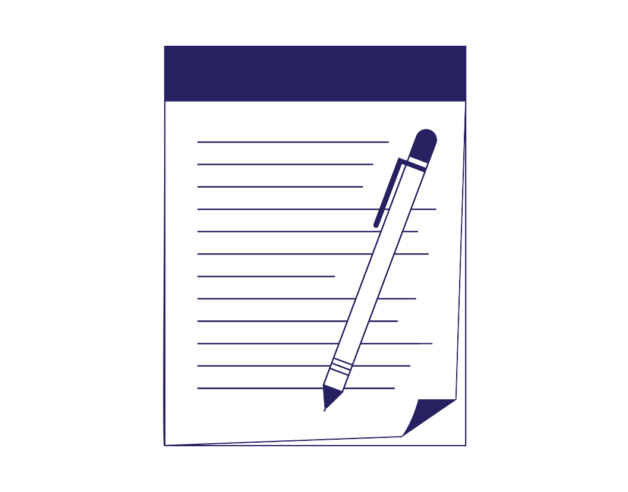
- 3-minute read
- 27th October 2023
You’ve spent hours researching and writing a compelling argumentative essay – now it’s finally time to write the conclusion. The conclusion may be the most significant part of your essay because it’s your final opportunity to make a lasting impression on your reader. Intimidated? Don’t be! In this post, we’ll show you how to write a strong conclusion for an argumentative essay.
Restate the Thesis and Summarize the Key Points
Begin by reiterating your thesis statement to emphasize your main point. However, to avoid sounding repetitive, it’s best to paraphrase the thesis and not use the exact wording from the introductory paragraph. You can also briefly recap the key points you’ve made throughout your essay. You don’t need to dive into too much detail here; the conclusion should be a concise reminder of your most critical arguments and avoid unnecessary repetition or commentary. Keep in mind that the conclusion is not the place to provide information or arguments you haven’t included in the body of your essay.
Emphasize the Significance of Your Arguments
The conclusion of your essay is a good place to highlight the importance of your argument and the implications of your findings. Briefly explain why your essay topic is significant and how your perspective relates to the wider context. For example, if you’re writing on the rising cost of medicine, you can discuss how this topic relates to the broader fields of health care and pharmaceutical sales.
Briefly Address Counterarguments
If you’ve discussed counterarguments in your essay, briefly acknowledge them in the conclusion. You can simply mention that although there are opposing views, you’ve supported your argument with the evidence presented in your essay.
Find this useful?
Subscribe to our newsletter and get writing tips from our editors straight to your inbox.
Maintain a Consistent Tone
Keep the tone of your conclusion consistent with the rest of the essay. For example, if your essay has been primarily formal and academic, maintain that tone in the conclusion (e.g., avoid closing with an informal anecdote or a witty observation).
End With a Thought-Provoking Statement
End your conclusion with a thought-provoking statement or call to action . This could involve a recommendation or prediction, or you could pinpoint areas for further research or action related to the topic. For example, if your topic is the impact of technology on education, you could end your essay by recommending further research into the long-term effects of technology use on students beyond elementary school.
Ensure that your arguments take center stage by having our expert team proofread your essay. Our editors have experience with a wide variety of academic subjects and can ensure that your words make an impact. Send in your sample for free today to see for yourself!
Share this article:
Post A New Comment
Got content that needs a quick turnaround? Let us polish your work. Explore our editorial business services.
6-minute read
How to Write a Nonprofit Grant Proposal
If you’re seeking funding to support your charitable endeavors as a nonprofit organization, you’ll need...
9-minute read
How to Use Infographics to Boost Your Presentation
Is your content getting noticed? Capturing and maintaining an audience’s attention is a challenge when...
8-minute read
Why Interactive PDFs Are Better for Engagement
Are you looking to enhance engagement and captivate your audience through your professional documents? Interactive...
7-minute read
Seven Key Strategies for Voice Search Optimization
Voice search optimization is rapidly shaping the digital landscape, requiring content professionals to adapt their...
4-minute read
Five Creative Ways to Showcase Your Digital Portfolio
Are you a creative freelancer looking to make a lasting impression on potential clients or...
How to Ace Slack Messaging for Contractors and Freelancers
Effective professional communication is an important skill for contractors and freelancers navigating remote work environments....

Make sure your writing is the best it can be with our expert English proofreading and editing.
- +44 (0) 207 391 9032
Recent Posts
How to write an effective essay outline.
- How to Write a Law Essay: A Comprehensive Guide with Examples
- What Are the Limitations of ChatGPT?
- How to Properly Write an Essay Outline Using ChatGpt
- Why Presentation Skills Are Important for Students
- Tips on How to Make an Essay Longer
- How to Structure Your Dissertation in 2024
- How to Write a Research Paper Like a Pro
- Academic Integrity vs. Academic Dishonesty: Understanding the Key Differences
- How to Use AI to Enhance Your Thesis
- Academic News
- Custom Essays
- Dissertation Writing
- Essay Marking
- Essay Writing
- Essay Writing Companies
- Model Essays
- Model Exam Answers
- Oxbridge Essays Updates
- PhD Writing
- Significant Academics
- Student News
- Study Skills
- University Applications
- University Essays
- University Life
- Writing Tips


How to write a captivating essay conclusion
(Last updated: 12 May 2021)
Since 2006, Oxbridge Essays has been the UK’s leading paid essay-writing and dissertation service
We have helped 10,000s of undergraduate, Masters and PhD students to maximise their grades in essays, dissertations, model-exam answers, applications and other materials. If you would like a free chat about your project with one of our UK staff, then please just reach out on one of the methods below.
You may be surprised when we say that an essay conclusion is, in some ways, comparable to a piece of text as emotive as say, Martin Luther King's "I Have a Dream" speech. Sounds ridiculous? Perhaps. But, extravagant comparisons aside, what we mean here is that the core purpose of an essay conclusion can be compared to the end of any great speech, monologue or presentation that leaves you feeling something . Ultimately, when you conclude an essay, you want to engage the reader's emotions, whether they be excitement, surprise, contemplation, or a mix of these and more. And you want to do this in much the same way that Martin Luther King would have done with his captivated audience on that memorable day in 1963.
Conclusions are among the hardest parts of an essay to write well. You need to round off your essay effectively. You need to leave your reader with the best possible impression of your work. And, you need to somehow recap all your central points without simply repeating yourself. Sound like a tricky balancing act? We explain it all in more depth below – read on for our tips on how to conclude an essay effectively.
How do I conclude an essay?
What is a conclusion? It’s a question that seems, on the face of it, to have a perfectly simple answer. It’s the paragraph (or so) at the end of your essay where you bring your essay to a stop by recapping your central arguments, right? Easy.
If we asked you to list a few synonyms for an essay conclusion, we’re willing to bet you’d come up with a few words or phrases like “recap”, “summary”, “restatement of your thesis”, and so on. And it’s true you’re likely to find all of these somewhere in the conclusion of an essay.
"Words and phrases like 'recap', 'summary' and 'restatement of your thesis' don't accurately describe what an essay conclusion is. A conclusion is so much more, and a lot hinges on how well it is done."
But none of the phrases above fully grasp the function of an essay conclusion. In fact, taking any one of them to be entirely synonymous with an essay conclusion is likely to lead you down the path towards writing bad essay conclusions, or at least missed-opportunity conclusions – conclusions that don’t take full advantage of their place at the end of the essay to fulfil their rhetorical potential.
OK then, how do I avoid concluding an essay badly?
Before we get to answering the question of what an essay conclusion is, it’s useful to spend a moment thinking about some of the things an essay conclusion isn’t .
- It’s not a repeat of your introduction. Every university instructor has encountered an essay where a student has copied and pasted, almost word-for-word, their introduction at the bottom of their essay. It should be obvious that there’s no point in doing this. You're just eating up words by repeating the same information over again. And if a conclusion were simply a rehash of the introduction, there wouldn’t be any point in ending the essay with it. You could just end with your final body paragraph argument. Or, if you really wanted your reader to read the introduction again and remind themselves of your central arguments, you could simply say something like, “See introduction”! OK, so copying and pasting the introduction is an extreme example, and you’re probably thinking “there’s no way I’d do something like that.” But it’s fairly common for students to conclude an essay by simply rephrasing their introduction. Just paraphrasing yourself while retaining all the content of your introduction isn’t a whole lot different from the copy-paste job. You’re still just going through the motions and repeating the same information without really getting to grips with the dedicated function a conclusion is supposed to fulfil.
- It’s not just a summary of your body paragraphs. Another common trap students fall into is to view the essay conclusion simply as a recap. They conclude an essay by providing a concise summary of each of the arguments they’ve made. This kind of recap can form an important part of your conclusion, especially in longer essays where you’ve made a series of complex arguments. But, as with repeating your introduction, eating up valuable word count simply to rehash stuff you’ve already said is redundant and doesn’t fulfil any sort of rhetorical or persuasive function.
- It’s not a place to add new content or make new arguments. Yes, your essay conclusion shouldn’t be simply a recap, a summary, or a repeat of what you’ve already written in your essay. But it is a place where you reflect on the arguments you’ve made rather than starting to introduce anything new. And here’s where the whole business of how to conclude an essay starts to get a bit complicated. If a conclusion is neither simply a recap of old information nor a place for new information, what is it, exactly?
A conclusion is a sales pitch!
If you’ve been paying attention you may have seen that we’ve already mentioned “rhetoric” a couple of times so far in this post – and this is no accident. You can’t really talk about essay conclusions without talking about rhetoric. The conclusion to an essay is the most purely rhetorical part of the entire piece.
By “rhetorical”, we mean a conclusion’s (and indeed the entire essay’s) ability to convince or persuade the reader of certain outlooks or arguments. An essay conclusion needs to use rhetoric to emotionally connect with the reader in some way. And this is done through the use of certain language and the way the information is presented.
If alarm bells are starting to ring at the mention of rhetoric, quiet them. Rhetoric gets a bad name in public discourse. Phrases like “pure rhetoric” or “empty rhetoric” are often used to suggest that an utterance lacks substance or integrity, or is somehow dishonest or insincere. And those are the last things you want your reader to take away from reading your essay! But rhetoric is one of the oldest scholarly disciplines in the world. In Classical societies – and in fact right up to the beginning of the twentieth century – it was considered one of the most important disciplines throughout Western society. The fact that it’s acquired something of a bad name over the last hundred years or so doesn’t mean it’s not still the foundation of good writing.
More importantly, your rhetorical skills can make a huge difference to whether your reader actually buys your argument. Let’s say we have two writers. One is skilled in rhetoric; the other less so. Both could make an identical set of arguments with the same supporting evidence and elicit entirely different responses in their readers. It’s true that the excessive use of rhetorical flourishes can rub your reader up the wrong way. It could cause them to think your essay is more about style than substance. But the subtler cues – in the way you phrase, structure, and present your arguments – can unquestionably make the difference between winning over a sceptical audience and leaving them unmoved.
"How you phrase, structure, and present arguments in your essay conclusion can make the difference between winning over a sceptical audience and leaving them unmoved – which could easily make a difference to your overall grade."
So what does all this have to do with how you conclude an essay? This can all seem a bit abstract when we’re dealing with essay writing , so let’s try an analogy. Let’s imagine you’re delivering a sales pitch for a property company. That company is trying to sell waterfront properties in a desirable holiday location – the Caribbean, say. Your audience is a set of moderately well-off individuals who regularly take expensive holidays. But, they’re not sure they can afford to buy a second home in the Caribbean. Even if they can afford it, they’re unclear if it would be a good investment.
To convince the members of your audience that they want to buy one of your properties, you’re going to have to conduct quite a detailed pitch. It could easily take a couple of hours or more to list the features of the property, the merits of the location, and the financial arrangements that will allow buyers to fund their purchase. You’ll make many arguments throughout your pitch, not all of which will be equally exciting. Sure, you’ll tell your potential customers about the balcony that leads off the master bedroom, the distance to the beach, and the amenities of the town in which the properties are located.
But your customers will also want to know other details: can they let the property while they’re not using it, for example? What kind of returns will that bring, and will these be enough to offset the purchase price? How are properties taxed in the area? And how about the facilities the local authority will provide? What kind of sanitation and waste facilities does the property have? Is it connected to a sewer or does it use a septic tank?
If the buyer is going to sign on the dotted line when it’s all done, you’re going to have to provide convincing answers to all of these questions. But simply recapping your arguments in order isn’t going to end the presentation effectively. You don’t want the lingering thought in your audience’s mind to be taxes or sewage. And you certainly don’t want to hit them with any new detail in your closing few slides. In fact, you don’t really want them to leave the presentation with any of the details you’ve discussed uppermost in their mind. Dwelling on any of the details is likely to remind them that buying and owning property is time-consuming, expensive, and stressful.
The impression you want to leave them with is that of having their very own place in the sun. An island paradise that’s theirs to return to any time they want to. You don’t want them leaving the building still musing over any of the specific points of your sales pitch. They need to be moved by the overall effect – and the promise – of what you’ve offered them. Sun on their backs, sand between their toes, and a crystal-clear blue ocean stretching out ahead of them.
So how does this help me conclude an essay?
OK, we get it. You’re not selling anybody a beach getaway when you conclude an essay. But what the above analogy describes is rhetoric . In an essay, you are making a pitch. And the same principles as the property sales example above apply.
Your essay conclusion is your parting shot. It’s your opportunity to leave your reader with a favourable impression of the arguments you’ve just made. You want them, at minimum, to be convinced that you’ve achieved what you set out to achieve; that you’ve proved your points . Better yet, you want them to feel satisfied that you’ve taken them on an intellectual journey that was interesting and rewarding.
Best of all, though, is if you leave them with a feeling of excitement . Excitement that your essay promises a new way of thinking about a topic, or a promising line of intellectual inquiry. The scholarly equivalent of feeling sand between their toes, in other words.

My five-paragraph essay has to be exciting ? How do you propose I manage that?
It’s true that not all essays are equally rewarding to read. But academia is all about the collaborative generation of knowledge. And even first-year undergraduate students can offer an original take on a subject that causes their instructors to think about a topic in a new way. Maybe they’ll even incorporate that new angle into their class teachings, or the next paper they write. Don’t underestimate how exciting that can be for instructors. And don’t underestimate how much your instructor – with a pile of fifty or a hundred essays to sift through – will appreciate a well-written, animated essay that reads satisfyingly from start to finish. And if there’s even a germ of an original idea in the essay, it’s your job to sell it. It’s your job to highlight what’s new and innovative about your argument, and to excite your reader. That’s what a good essay conclusion does.
Here's a note if you’re writing an essay using a formulaic structure like the five-paragraph, three-argument essay. With these formulaic essays it’s even more important that you don’t simply regurgitate your introduction in your conclusion. The key to concluding an essay of any length or complexity is persuading your reader that there’s been development between the start and end of the essay. They must end knowing more than they did at the start. The same applies for five-paragraph essays.
Let’s consider an example where you’re writing a five-paragraph essay about Shakespeare’s famous Sonnet 18, and you’ve been asked to examine some of the formal features of the sonnet. We’ll take a look at a sample introduction that concisely outlines the thesis of the essay, and then think about how we might conclude such an essay effectively. (Note: this example contains some fairly detailed literary-critical terminology, but you don’t need to understand this to be able to follow along.)
Introduction:
William Shakespeare’s Sonnet 18 (“Shall I compare thee to a summer’s day?”) is one of his best-known sonnets and deals with themes of eternal love, ageing, and the nature of art. This essay explores how Shakespeare uses the formal structure of the sonnet, together with small but significant variations in the meter, and the conceit of the changing seasons, to explore these themes.
Body paragraphs:
[ Body paragraph 1: the structure of an English sonnet, the use of the “turn” at the start of the third quatrain, and the couplet at the end that presents a neat summary of the poem’s message about the timelessness of art in the face of human ageing.]
[ Body paragraph 2: the generally regular use of iambic pentameter in the sonnet, and the effects of strategic substitutions, in particular the replacement of the first iambic foot in line 3 with a spondaic foot, and its introduction of a note of restlessness and discord after the harmonious opening two lines.]
[ Body paragraph 3: the conceit of the changing seasons that runs through the entire poem, and the ways in which Shakespeare uses the sonnet structure to explore different aspects of this theme.]
Bad essay conclusion (rephrasing of the thesis statement, lacking any development):
Sonnet 18 explores the themes of love, ageing, and art through the extended metaphor of the changing seasons. Shakespeare uses the sonnet’s formal structure, variations in the iambic pentameter meter, and the conceit of summer changing into winter, to explore these eternal themes.
Better essay conclusion (recaps on central points and makes some attempt to draw them together):
In Sonnet 18, Shakespeare explores the themes of love, ageing, and art through the extended metaphor of the changing seasons. Shakespeare uses both the meter and structure of the sonnet to maximise the effectiveness of this metaphor. Metrical variations like the spondaic substitution at the start of the third line maximise the drama of this metaphor. By making use of the formal structure of the sonnet – especially the “turn” at the start of the third quatrain – Shakespeare is able to explore different facets of his central conceit of summer changing into winter.
Best essay conclusion (recaps central points but makes the key links between them explicit and gestures towards broader implications):
Shakespeare’s sonnets are among the most celebrated sequences of poems in the English language, and Sonnet 18 provides several important illustrations of why this is. The formal techniques Shakespeare uses to explore the poem’s central conceit of changing seasons are often very subtle, but demonstrate a mastery of the sonnet form that enhances his exploration of his central conceit of the changing seasons. We have seen, for example, how minor metrical variations have a powerful impact on the poem’s message, like the use of the spondaic foot “Rough winds” in place of an iambic foot at the start of the third line, which introduces a note of conflict into the seemingly harmonious simile with which he begins the sonnet. And the archetypal sonnet “turn” that Shakespeare deploys at the start of the third quatrain allows him to convey a profound message about the redemptive, eternal power of art, transforming a melancholy lament on the process of ageing into a triumphant celebration of the poem itself.
As you’ll see from these three examples, there are many different ways to conclude an essay and recap on its central points. Each of the above essay conclusions could apply to the same basic thesis statement and three body paragraphs, but they would have radically different effects on the overall way a reader interprets the value of these arguments.
Our first example simply restates the thesis without displaying any significant development. The points made in the three body paragraphs are simply presented in the conclusion as a list. This creates an overall effect of disjointedness (often a major problem for five-paragraph essays).
The second example demonstrates the bare minimum a reader should expect from a conclusion. It creates a sense of development through the essay by revisiting some of the detail of the body paragraphs and attempting to draw links between them.
However, the third example represents a much more convincing “sales pitch” for this kind of essay. It groups together the various body paragraph arguments into a single unifying theme. In this case, it’s the idea that Shakespeare’s greatness as a poet rests in his mastery of form and content, and his ability to weave the two subtly into a poem that first descents into a lament on the ravages of ageing and then abruptly turns into a celebration of art and poetry.
What makes this conclusion example really stand out from the other two is its sense of balance between recap and sales pitch. Although it doesn’t introduce any new content, it does gesture towards broader implications for the arguments presented in the essay. For example, it highlights Shakespeare’s greatness as a poet and a master of form. The effect on a mundane, humdrum five-paragraph essay is quite transformative. The essay conclusion takes the contents of a fairly bog-standard, elementary literary-critical argument and makes them seem exciting and relevant.
A conclusion can’t save a bad essay, of course. But if you conclude an essay with the right sales pitch you can make even fairly elementary arguments sparkle!

How (and how not) to conclude an essay – dos and don’ts
The examples above offer some good pointers to help you conclude an essay in the most persuasive possible way. Here’s a summary of what we’ve learned:
- Do sell it. If your introduction and body paragraphs are where you lay the solid groundwork for your essay, your conclusion is where you convince your reader that what they’ve read represented a fun, insightful, intellectual journey that was worth their time. Don’t be afraid of rhetoric when you’re looking to conclude an essay – make the biggest, boldest pitch you can for the value of what you’ve argued.
- Do pull it all together. When you conclude an essay, you’re not only trying to convince your reader of the merit of your individual points or body paragraphs. You’re also making the case that your essay represented a unified, coherent whole. If you include one new thing in your introduction, make it an explicit theme that unifies all of your points and convinces your reader that your essay is a single, flowing, logical unit.
- Do be speculative. The conclusion to an essay is the one place where you get to bend the rules just a little bit. Throughout the rest of your essay you need to be scrupulously careful not to make assertions you can’t back up. But it’s expected that your conclusion gestures broadly – and slightly speculatively – towards the implications of your argument. Don’t go nuts and claim your argument will change the world, of course. That’s wholly unsupportable and comes across as ludicrous and overblown – the “bad” kind of rhetoric. But you should be aiming to excite your reader. You can often do this by suggesting that there’s an urgent need to change approach to a problem or view it in a new way.
- Don’t just rehash your thesis. The absolute least effective way you can conclude an essay is to simply repeat what you’ve already said in your introduction. You’ll create a sense of stagnation which is the very opposite of the sense of progression and dynamism you’re trying to create. This is especially true if your essay is short.
- Don’t introduce whole new arguments. It’s true, your essay conclusion should revisit your arguments in a fresh way, whether that’s by underlying a unifying theme or gesturing towards the implications of what you’ve written. But you still need to conclude your essay by reflecting on arguments you’ve already made, not by introducing new ones.

Essay exams: how to answer ‘To what extent…’

How to write a master’s essay

- academic writing
- essay conclusion
- essay writing service
- writing a good essay
- writing tips
Writing Services
- Essay Plans
- Critical Reviews
- Literature Reviews
- Presentations
- Dissertation Title Creation
- Dissertation Proposals
- Dissertation Chapters
- PhD Proposals
- Journal Publication
- CV Writing Service
- Business Proofreading Services
Editing Services
- Proofreading Service
- Editing Service
- Academic Editing Service
Additional Services
- Marking Services
- Consultation Calls
- Personal Statements
- Tutoring Services
Our Company
- Frequently Asked Questions
- Become a Writer
Terms & Policies
- Fair Use Policy
- Policy for Students in England
- Privacy Policy
- Terms & Conditions
- [email protected]
- Contact Form
Payment Methods
Cryptocurrency payments.
39 Different Ways to Say ‘In Conclusion’ in an Essay (Rated)

Chris Drew (PhD)
Dr. Chris Drew is the founder of the Helpful Professor. He holds a PhD in education and has published over 20 articles in scholarly journals. He is the former editor of the Journal of Learning Development in Higher Education. [Image Descriptor: Photo of Chris]
Learn about our Editorial Process

The phrase “In conclusion …” sounds reductive, simple and … well, just basic.
You can find better words to conclude an essay than that!
So below I’ve outlined a list of different ways to say in conclusion in an essay using a range of analysis verbs . Each one comes with an explanation of the best time to use each phrase and an example you could consider.
Read Also: How to Write a Conclusion using the 5C’s Method
List of Ways to Say ‘In Conclusion’ in an Essay
The following are the best tips I have for to say in conclusion in an essay.
1. The Weight of the Evidence Suggests…
My Rating: 10/10
Overview: This is a good concluding phrase for an evaluative essay where you need to compare two different positions on a topic then conclude by saying which one has more evidence behind it than the other.
You could also use this phrase for argumentative essays where you’ve put forward all the evidence for your particular case.
Example: “The weight of the evidence suggests that climate change is a real phenomenon.”
2. A Thoughtful Analysis would Conclude…
My Rating: 9/10
Overview: I would use this phrase in either an argumentative essay or a comparison essay. As an argument, it highlights that you think your position is the most logical.
In a comparison essay, it shows that you have (or have intended to) thoughtfully explore the issue by looking at both sides.
Example: “A thoughtful analysis would conclude that there is substantial evidence highlighting that climate change is real.”
Related Article: 17+ Great Ideas For An Essay About Yourself
3. A Balanced Assessment of the Above Information…
Overview: This phrase can be used to show that you have made a thoughtful analysis of the information you found when researching the essay. You’re telling your teacher with this phrase that you have looked at all sides of the argument before coming to your conclusion.
Example: “A balanced assessment of the above information would be that climate change exists and will have a strong impact on the world for centuries to come.”
4. Across the Board…
My Rating: 5/10
Overview: I would use this phrase in a less formal context such as in a creative discussion but would leave it out of a formal third-person essay. To me, the phrase comes across as too colloquial.
Example: “Across the board, there are scientists around the world who consistently provide evidence for human-induced climate change.”
5. Logically…
My Rating: 7/10
Overview: This phrase can be used at the beginning of any paragraph that states out a series of facts that will be backed by clear step-by-step explanations that the reader should be able to follow to a conclusion.
Example: “Logically, the rise of the automobile would speed up economic expansion in the United States. Automobiles allowed goods to flow faster around the economy.
6. After all is Said and Done…
Overview: This is a colloquial term that is more useful in a speech than written text. If you feel that the phrase ‘In conclusion,’ is too basic, then I’d also avoid this term. However, use in speech is common, so if you’re giving a speech, it may be more acceptable.
Example: “After all is said and done, it’s clear that there is more evidence to suggest that climate change is real than a hoax.”
7. All in All…
Overview: ‘All in all’ is a colloquial term that I would use in speech but not in formal academic writing. Colloquialisms can show that you have poor command of the English language. However, I would consider using this phrase in the conclusion of a debate.
Example: “All in all, our debate team has shown that there is insurmountable evidence that our side of the argument is correct.”
8. All Things Considered…
My Rating: 6/10
Overview: This term is a good way of saying ‘I have considered everything above and now my conclusion is..’ However, it is another term that’s more commonly used in speech than writing. Use it in a high school debate, but when it comes to a formal essay, I would leave it out.
Example: “All things considered, there’s no doubt in my mind that climate change is man-made.”
9. As a Final Note…
My Rating: 3/10
Overview: This phrase gives me the impression that the student doesn’t understand the point of a conclusion. It’s not to simply make a ‘final note’, but to summarize and reiterate. So, I would personally avoid this one.
Example: “As a final note, I would say that I do think the automobile was one of the greatest inventions of the 20 th Century.”
10. As Already Stated…
My Rating: 2/10
Overview: I don’t like this phrase. It gives teachers the impression that you’re going around in circles and haven’t organized your essay properly. I would particularly avoid it in the body of an essay because I always think: “If you already stated it, why are you stating it again?” Of course, the conclusion does re-state things, but it also adds value because it also summarizes them. So, add value by using a phrase such as ‘summarizing’ or ‘weighing up’ in your conclusion instead.
Example: “As already stated, I’m going to repeat myself and annoy my teacher.”
11. At present, the Best Evidence Suggests…
My Rating: 8/10
Overview: In essays where the evidence may change in the future. Most fields of study do involve some evolution over time, so this phrase acknowledges that “right now” the best evidence is one thing, but it may change in the future. It also shows that you’ve looked at the latest information on the topic.
Example: “At present, the best evidence suggests that carbon dioxide emissions from power plants is the greatest influence on climate change.”
12. At the Core of the Issue…
Overview: I personally find this phrase to be useful for most essays. It highlights that you are able to identify the most important or central point from everything you have examined. It is slightly less formal than some other phrases on this list, but I also wouldn’t consider it too colloquial for an undergraduate essay.
Example: “At the core of the issue in this essay is the fact scientists have been unable to convince the broader public of the importance of action on climate change.”
13. Despite the shortcomings of…
Overview: This phrase can be useful in an argumentative essay. It shows that there are some limitations to your argument, but , on balance you still think your position is the best. This will allow you to show critical insight and knowledge while coming to your conclusion.
Often, my students make the mistake of thinking they can only take one side in an argumentative essay. On the contrary, you should be able to highlight the limitations of your point-of-view while also stating that it’s the best.
Example: “Despite the shortcomings of globalization, this essay has found that on balance it has been good for many areas in both the developed and developing world.”
14. Finally…
My Rating: 4/10
Overview: While the phrase ‘Finally,’ does indicate that you’re coming to the end of your discussion, it is usually used at the end of a list of ideas rather than in a conclusion. It also implies that you’re adding a point rather that summing up previous points you have made.
Example: “Finally, this essay has highlighted the importance of communication between policy makers and practitioners in order to ensure good policy is put into effect.”
15. Gathering the above points together…
Overview: While this is not a phrase I personally use very often, I do believe it has the effect of indicating that you are “summing up”, which is what you want out of a conclusion.
Example: “Gathering the above points together, it is clear that the weight of evidence highlights the importance of action on climate change.”
16. Given the above information…
Overview: This phrase shows that you are considering the information in the body of the piece when coming to your conclusion. Therefore, I believe it is appropriate for starting a conclusion.
Example: “Given the above information, it is reasonable to conclude that the World Health Organization is an appropriate vehicle for achieving improved health outcomes in the developing world.”
17. In a nutshell…
Overview: This phrase means to say everything in the fewest possible words. However, it is a colloquial phrase that is best used in speech rather than formal academic writing.
Example: “In a nutshell, there are valid arguments on both sides of the debate about socialism vs capitalism.”
18. In closing…
Overview: This phrase is an appropriate synonym for ‘In conclusion’ and I would be perfectly fine with a student using this phrase in their essay. Make sure you follow-up by explaining your position based upon the weight of evidence presented in the body of your piece
Example: “In closing, there is ample evidence to suggest that liberalism has been the greatest force for progress in the past 100 years.”
19. In essence…
Overview: While the phrase ‘In essence’ does suggest you are about to sum up the core findings of your discussion, it is somewhat colloquial and is best left for speech rather than formal academic writing.
Example: “In essence, this essay has shown that cattle farming is an industry that should be protected as an essential service for our country.”
20. In review…
Overview: We usually review someone else’s work, not our own. For example, you could review a book that you read or a film you watched. So, writing “In review” as a replacement for “In conclusion” comes across a little awkward.
Example: “In review, the above information has made a compelling case for compulsory military service in the United States.”
21. In short…
Overview: Personally, I find that this phrase is used more regularly by undergraduate student. As students get more confident with their writing, they tend to use higher-rated phrases from this list. Nevertheless, I would not take grades away from a student for using this phrase.
Example: “In short, this essay has shown the importance of sustainable agriculture for securing a healthy future for our nation.”
22. In Sum…
Overview: Short for “In summary”, the phrase “In sum” sufficiently shows that you are not coming to the moment where you will sum up the essay. It is an appropriate phrase to use instead of “In conclusion”.
But remember to not just summarize but also discuss the implications of your findings in your conclusion.
Example: “In sum, this essay has shown the importance of managers in ensuring efficient operation of medium-to-large enterprises.”
23. In Summary…
Overview: In summary and in sum are the same terms which can be supplemented for “In conclusion”. You will show that you are about to summarize the points you said in the body of the essay, which is what you want from an essay.
Example: “In summary, reflection is a very important metacognitive skill that all teachers need to master in order to improve their pedagogical skills.”
24. It cannot be conclusively stated that…
Overview: While this phrase is not always be a good fit for your essay, when it is, it does show knowledge and skill in writing. You would use this phrase if you are writing an expository essay where you have decided that there is not enough evidence currently to make a firm conclusion on the issue.
Example: “It cannot be conclusively stated that the Big Bang was when the universe began. However, it is the best theory so far, and none of the other theories explored in this essay have as much evidence behind them.”
25. It is apparent that…
Overview: The term ‘ apparent ’ means that something is ‘clear’ or even ‘obvious’. So, you would use this word in an argumentative essay where you think you have put forward a very compelling argument.
Example: “It is apparent that current migration patterns in the Americas are unsustainable and causing significant harm to the most vulnerable people in our society.”
26. Last but not least…
Overview: The phrase “last but not least” is a colloquial idiom that is best used in speech rather than formal academic writing. Furthermore, when you are saying ‘last’, you mean to say you’re making your last point rather than summing up all your points you already made. So, I’d avoid this one.
Example: “Last but not least, this essay has highlighted the importance of empowering patients to exercise choice over their own medical decisions.”
27. Overall…
My Rating: 7.5/10
Overview: This phrase means ‘taking everything into account’, which sounds a lot like what you would want to do in an essay. I don’t consider it to be a top-tier choice (which is why I rated it 7), but in my opinion it is perfectly acceptable to use in an undergraduate essay.
Example: “Overall, religious liberty continues to be threatened across the world, and faces significant threats in the 21 st Century.”
28. The above points illustrate…
Overview: This phrase is a good start to a conclusion paragraph that talks about the implications of the points you made in your essay. Follow it up with a statement that defends your thesis you are putting forward in the essay.
Example: “The above points illustrate that art has had an overwhelmingly positive impact on humanity since the renaissance.”
29. The evidence presented in this essay suggests that…
Overview: I like this phrase because it highlights that you are about to gather together the evidence from the body of the essay to put forward a final thesis statement .
Example: “The evidence presented in this essay suggests that the democratic system of government is the best for securing maximum individual liberty for citizens of a nation.”
30. This essay began by stating…
Overview: This phrase is one that I teach in my YouTube mini-course as an effective one to use in an essay conclusion. If you presented an interesting fact in your introduction , you can return to that point from the beginning of the essay to provide nice symmetry in your writing.
Example: “This essay began by stating that corruption has been growing in the Western world. However, the facts collected in the body of the essay show that institutional checks and balances can sufficiently minimize this corruption in the long-term.”
31. This essay has argued…
Overview: This term can be used effectively in an argumentative essay to provide a summary of your key points. Follow it up with an outline of all your key points, and then a sentence about the implications of the points you made. See the example below.
Example: “This essay has argued that standardized tests are damaging for students’ mental health. Tests like the SATs should therefore be replaced by project-based testing in schools.”
32. To close…
Overview: This is a very literal way of saying “In conclusion”. While it’s suitable and serves its purpose, it does come across as being a sophomoric term. Consider using one of the higher-rated phrases in this list.
Example: “To close, this essay has highlighted both the pros and cons of relational dialectics theory and argued that it is not the best communication theory for the 21 st Century.”
33. To Conclude…
Overview: Like ‘to close’ and ‘in summary’, the phrase ‘to conclude’ is very similar to ‘in conclusion’. It can therefore be used as a sufficient replacement for that term. However, as with the above terms, it’s just okay and you could probably find a better phrase to use.
Example: “To conclude, this essay has highlighted that there are multiple models of communication but there is no one perfect theory to explain each situation.”
34. To make a long story short…
My Rating: 1/10
Overview: This is not a good phrase to use in an academic essay. It is a colloquialism. It also implies that you have been rambling in your writing and you could have said everything more efficiently. I would personally not use this phrase.
Example: “To make a long story short, I don’t have very good command of academic language.”
35. To Sum up…
Overview: This phrase is the same as ‘In summary’. It shows that you have made all of your points and now you’re about to bring them all together in a ‘summary’. Just remember in your conclusion that you need to do more than summarize but also talk about the implications of your findings. So you’ll need to go beyond just a summary.
Example: “In summary, there is ample evidence that linear models of communication like Lasswell’s model are not as good at explaining 21 st Century communication as circular models like the Osgood-Schramm model .”
36. Ultimately…
Overview: While this phrase does say that you are coming to a final point – also known as a conclusion – it’s also a very strong statement that might not be best to use in all situations. I usually accept this phrase from my undergraduates, but for my postgraduates I’d probably suggest simply removing it.
Example: “Ultimately, new media has been bad for the world because it has led to the spread of mistruths around the internet.”
37. Undoubtedly…
Overview: If you are using it in a debate or argumentative essay, it can be helpful. However, in a regular academic essay, I would avoid it. We call this a ‘booster’, which is a term that emphasizes certainty. Unfortunately, certainty is a difficult thing to claim, so you’re better off ‘hedging’ with phrases like ‘It appears’ or ‘The best evidence suggests’.
Example: “Undoubtedly, I know everything about this topic and am one hundred percent certain even though I’m just an undergraduate student.”
38. Weighing up the facts, this essay finds…
Overview: This statement highlights that you are looking at all of the facts both for and against your points of view. It shows you’re not just blindly following one argument but being careful about seeing things from many perspectives.
Example: “Weighing up the facts, this essay finds that reading books is important for developing critical thinking skills in childhood.”
39. With that said…
Overview: This is another phrase that I would avoid. This is a colloquialism that’s best used in speech rather than writing. It is another term that feels sophomoric and is best to avoid. Instead, use a more formal term such as: ‘Weighing up the above points, this essay finds…’
Example: “With that said, this essay disagrees with the statement that you need to go to college to get a good job.”
Do you Need to Say Anything?
Something I often tell my students is: “Can you just remove that phrase?”
Consider this sentence:
- “In conclusion, the majority of scientists concur that climate change exists.”
Would it be possible to simply say:
- “ In conclusion, The majority of scientists concur that climate change exists.”
So, I’d recommend also just considering removing that phrase altogether! Sometimes the best writing is the shortest, simplest writing that gets to the point without any redundant language at all.
How to Write an Effective Conclusion
Before I go, I’d like to bring your attention to my video on ‘how to write an effective conclusion’. I think it would really help you out given that you’re looking for help on how to write a conclusion. It’s under 5 minutes long and has helped literally thousands of students write better conclusions for their essays:
You can also check out these conclusion examples for some copy-and-paste conclusions for your own essay.
In Conclusion…
Well, I had to begin this conclusion with ‘In conclusion…’ I liked the irony in it, and I couldn’t pass up that chance.
Overall, don’t forget that concluding an essay is a way to powerfully summarize what you’ve had to say and leave the reader with a strong impression that you’ve become an authority on the topic you’re researching.
So, whether you write it as a conclusion, summary, or any other synonym for conclusion, those other ways to say in conclusion are less important than making sure that the message in your conclusion is incredibly strong.

- Chris Drew (PhD) https://helpfulprofessor.com/author/chris-drew-phd-2/ 25 Number Games for Kids (Free and Easy)
- Chris Drew (PhD) https://helpfulprofessor.com/author/chris-drew-phd-2/ 25 Word Games for Kids (Free and Easy)
- Chris Drew (PhD) https://helpfulprofessor.com/author/chris-drew-phd-2/ 25 Outdoor Games for Kids
- Chris Drew (PhD) https://helpfulprofessor.com/author/chris-drew-phd-2/ 50 Incentives to Give to Students
Leave a Comment Cancel Reply
Your email address will not be published. Required fields are marked *

Essay Conclusion
Essay conclusion generator.

Captivating your readers until the very end is a crucial goal in essay writing. The conclusion holds the power to leave a lasting impression, reinforcing your arguments and providing a sense of closure. In this article, we will delve into the art of crafting essay conclusions that resonate with your audience. Whether you’re a student seeking guidance or a seasoned writer in search of inspiration, this comprehensive guide will equip you with the tools to master the art of concluding your essays effectively.
1. Argumentative Essay Conclusion
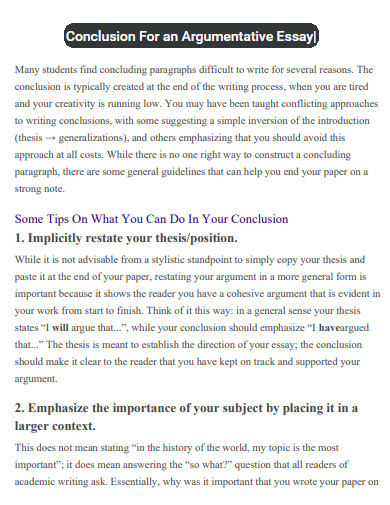
Size: 110 KB
2. University Essay Conclusion
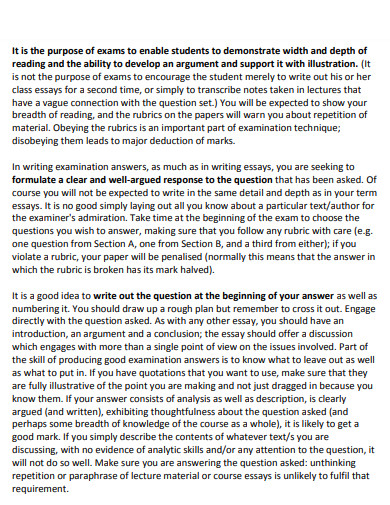
Size: 857 KB
3. Essay Conclusion Structure
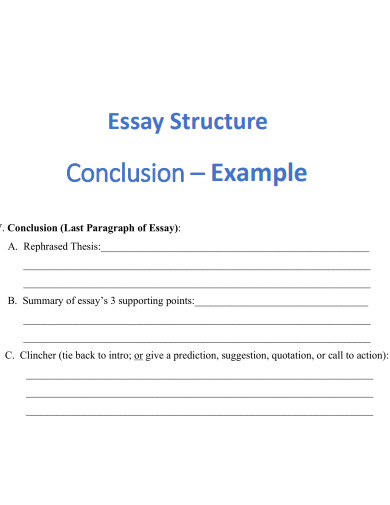
Size: 529 KB
4. English Essay Conclusion
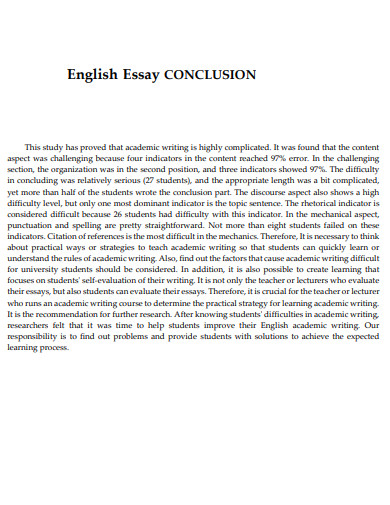
Size: 507 KB
5. Essay Paragraph Conclusion
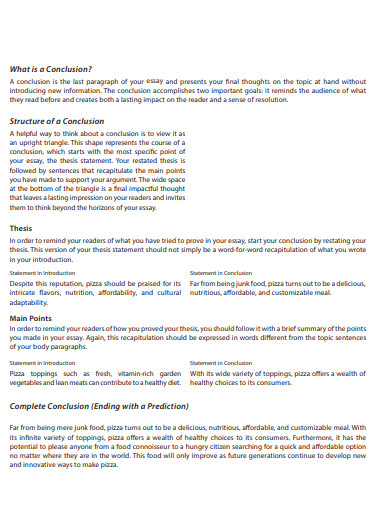
Size: 66 KB
6. Essay on Mental Health Conclusion
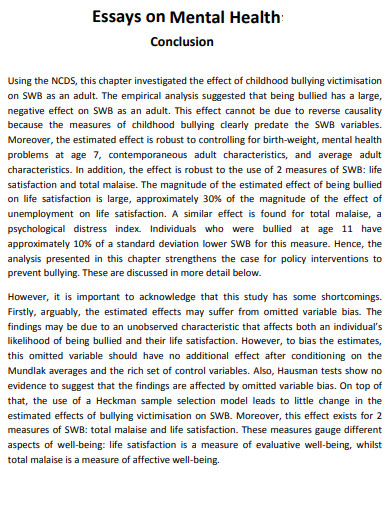
7. Essay on Research Conclusion
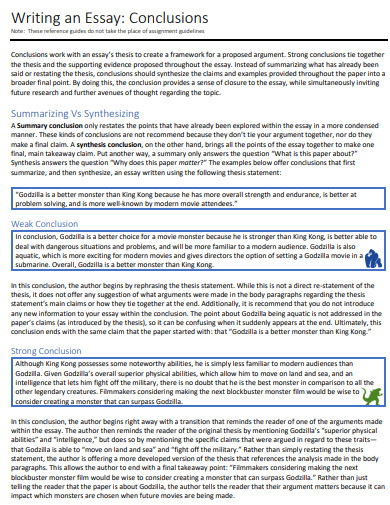
Size: 668 KB
8. Social Media Essay Conclusion
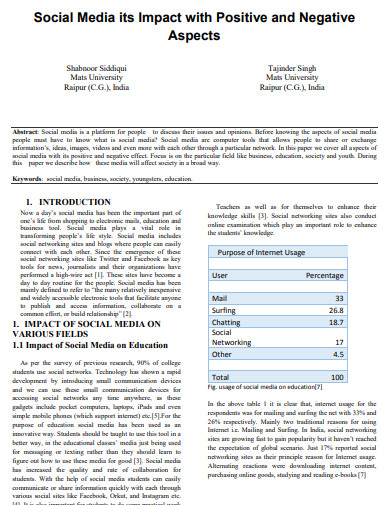
Size: 220 KB
9. Education Essay Conclusion
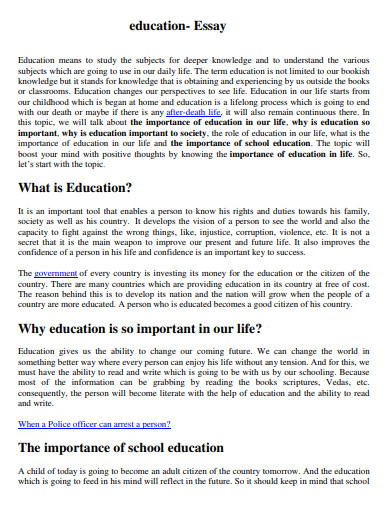
Size: 42 KB
10. Essay Conclusion Sentence
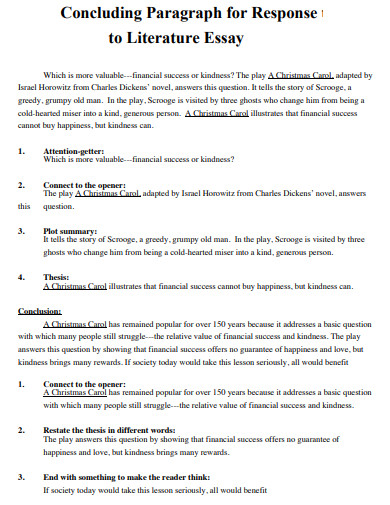
Size: 58 KB
11. Call to Action Essay Conclusion
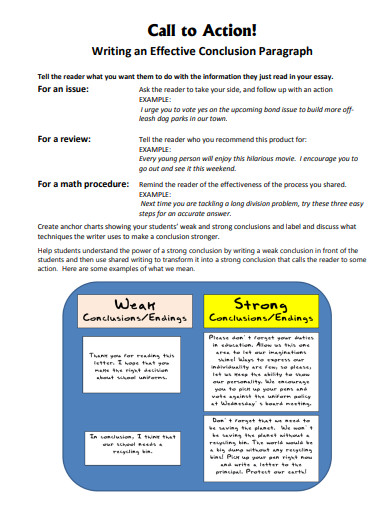
Size: 257 KB
12. Family Essay Conclusion
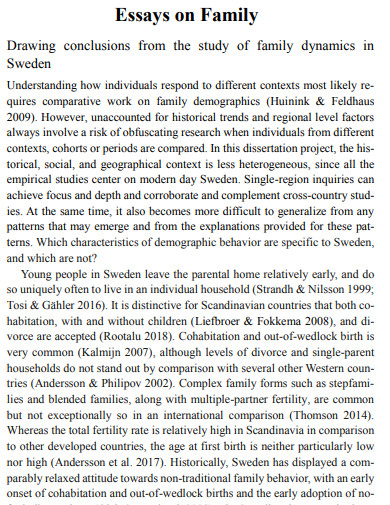
Size: 728 KB
13. Thesis Essay Conclusion
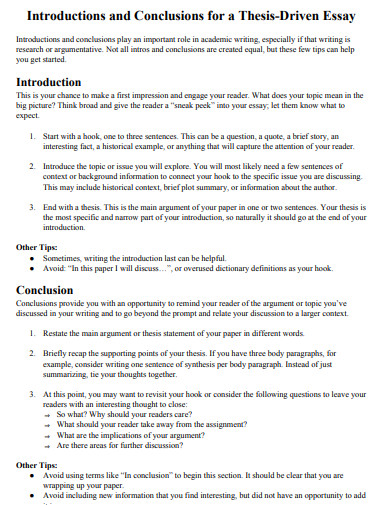
Size: 158 KB
14. Romeo and Juliet Essay Conclusion
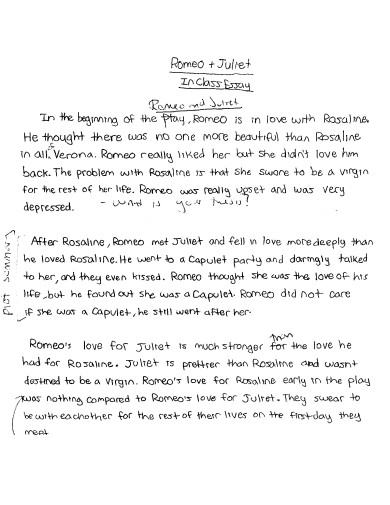
Size: 103 KB
15. Air Pollution Essay Conclusion
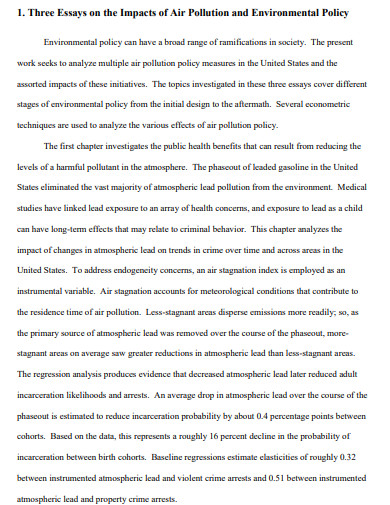
16. Essay Conclusion Template
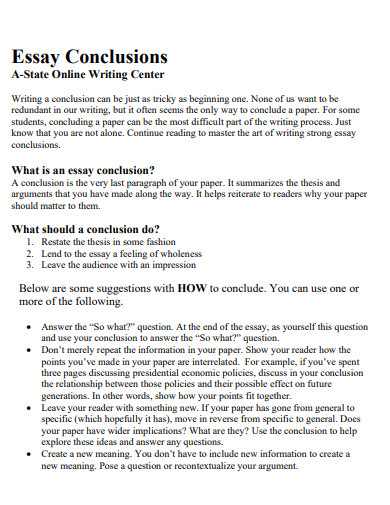
Size: 148 KB
17. Essay Conclusion Example
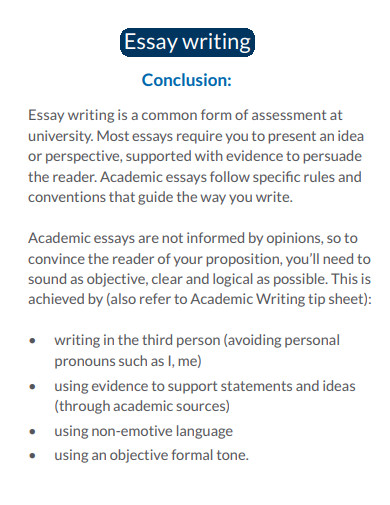
Size: 120 KB
18. Academic Essay Conclusion
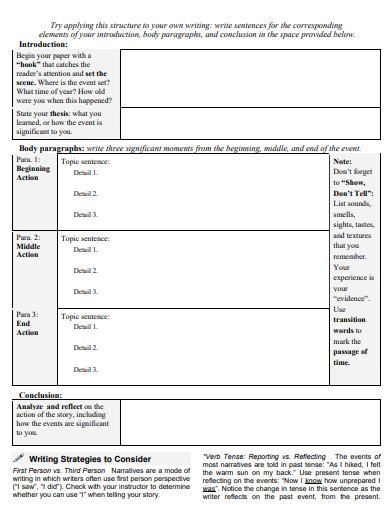
Size: 72 KB
19. Informative Essay Conclusion
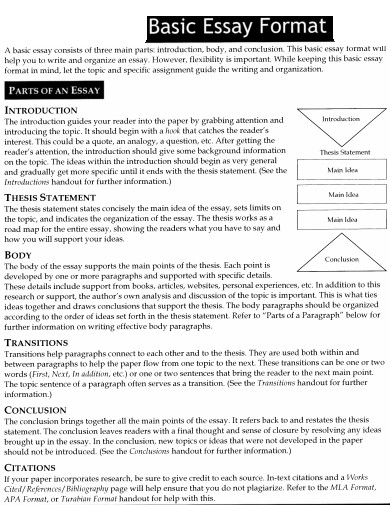
Size: 151 KB
20. Music Essay Conclusion
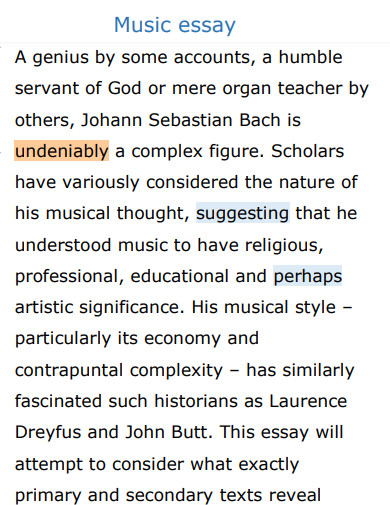
Size: 566 KB
21. 4th Grade Essay Conclusion
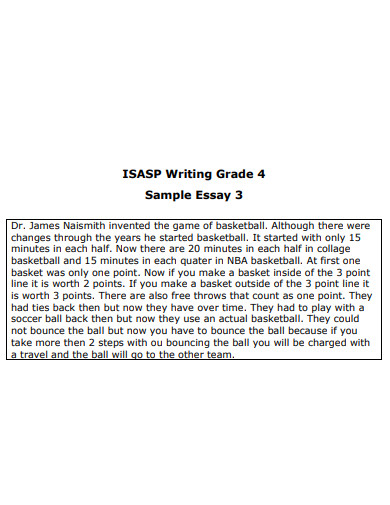
Size: 584 KB
22. 6th Grade Essay Conclusion
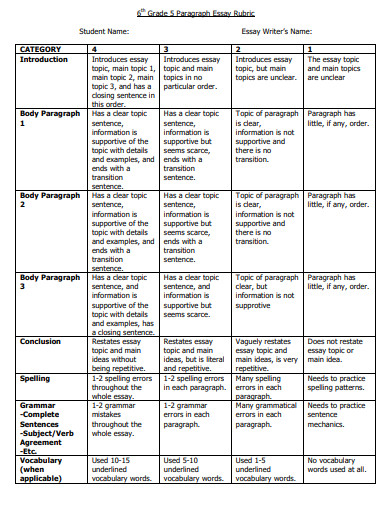
Size: 22 KB
23. Essay on Technology Conclusion
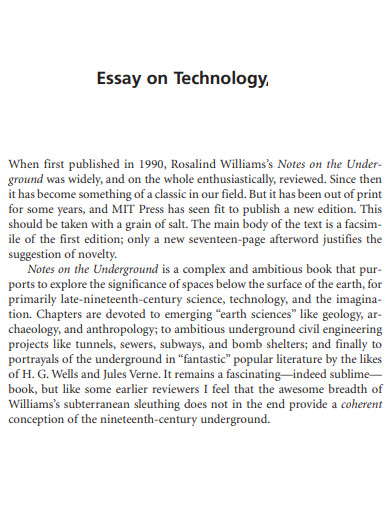
Size: 46 KB
24. Communication Essay Conclusion

Size: 494 KB
25. Deforestation Essay Conclusion
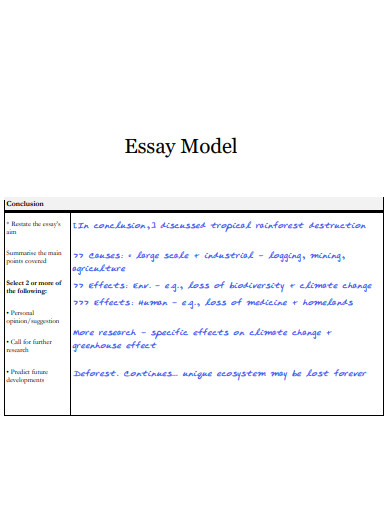
Size: 188 KB
26. Business Essay Conclusion
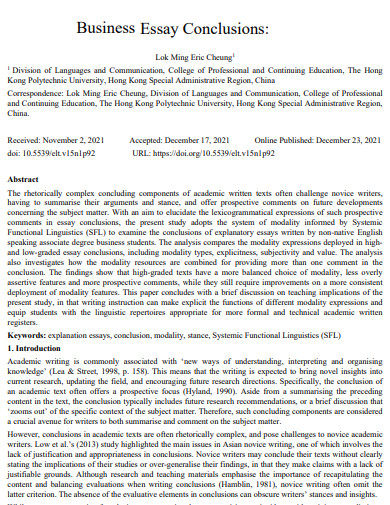
Size: 283 KB
27. Planning Guide Essay Conclusion

Size: 182 KB
28. Basic Essay Conclusion
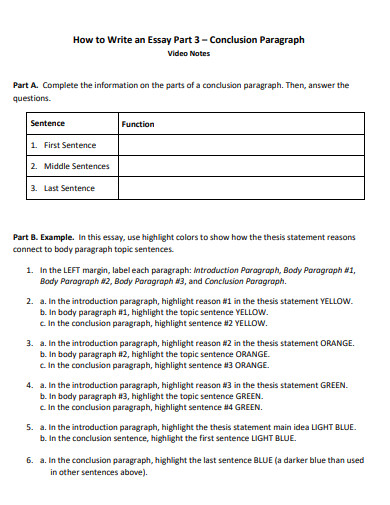
Size: 123 KB
29. Leadership Essay Conclusion
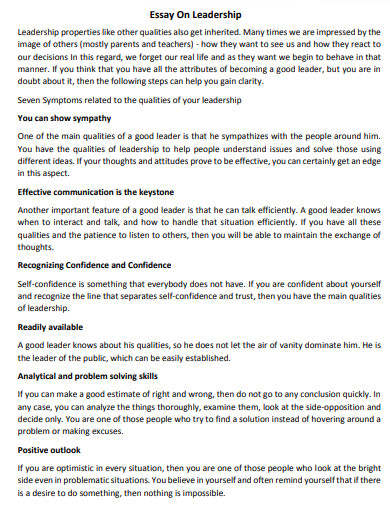
Size: 194 KB
30. Standard Essay Conclusion
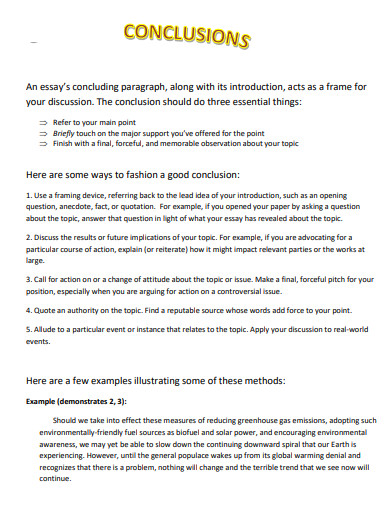
Size: 276 KB
What is an Essay Conclusion?
An essay conclusion serves as the final segment of your written composition. It brings together all the ideas, arguments, and evidence presented throughout the essay and synthesizes them into a concise and coherent final statement. Think of it as the grand finale that encapsulates your main points and leaves a lasting impression on your readers.
How to Write an Essay Conclusion
To create a compelling essay conclusion, follow these step-by-step guidelines
Step 1: Restate your thesis:
Begin by restating your thesis statement, reminding readers of the central argument you have been supporting throughout your essay. However, avoid repeating it verbatim. Instead, rephrase it to maintain reader engagement.
Step 2: Summarize your main points:
Provide a succinct summary of the key points and arguments discussed in the body paragraphs. Focus on the most significant aspects while maintaining a logical flow. Avoid introducing new information or ideas at this stage.
Step 3: Emphasize the significance:
Highlight the broader implications of your essay’s topic and the relevance of your arguments in a wider context. Convey the importance of your findings and their potential impact on the subject matter or the reader’s perspective.
Step 4: Evoke emotions:
Create an emotional connection with your readers by emphasizing the significance of your topic or appealing to their values and beliefs. Stirring emotions can leave a lasting impact and make your conclusion more memorable.
Step 5: Offer a call to action or recommendation:
Depending on the nature of your essay, conclude with a call to action or a thoughtful recommendation that encourages readers to consider further action or reflection on the topic. This can inspire them to continue exploring or take specific steps related to the subject matter.
What is the ideal length for an essay conclusion?
The length of an essay conclusion varies depending on the overall length of your essay. As a general guideline, aim for a conclusion that is concise yet comprehensive, spanning approximately 10-15% of your total essay length.
Can I introduce new information in my essay conclusion?
Avoid introducing new information or arguments in your conclusion. Instead, focus on summarizing and reinforcing the ideas already presented, providing a sense of closure to your essay.
How can I make my essay conclusion more impactful?
To make your essay conclusion more impactful, strive for clarity, emotional resonance, and a sense of closure. Utilize strong language, vivid imagery, and rhetorical devices to leave a lasting impression on your readers.
Just as every book needs a captivating ending to satisfy its readers, your essay deserves a conclusion that lingers in the minds of your audience. By employing the strategies discussed here, you can transform your essay conclusions into thought-provoking reflections, leaving your readers with a sense of fulfillment and a desire to explore your ideas further.
If you’re hungry for more examples and guidance, here are some related articles to inspire you:
- Dive into the world of narratives with 26+ Narrative Essay Examples in PDF .
- Explore the diverse realm of collage essays with 20+ College Essay Examples .
- Enhance your analytical skills with 4+ Interview Analysis Essay Examples in PDF .
- Master concise reporting with 11+ Short Report Essay Examples .
- Uncover the secrets of academic writing with 4+ Short Academic Essay Examples .
- Understand the essay text structure to elevate your writing.
- Delve into self-reflection with 7+ Self Evaluation Essay Examples in PDF .
- Craft persuasive arguments with an Argument Essay .
- For a comprehensive understanding of essay writing, refer to 21+ Essay Writing Examples in PD F.
Remember, the conclusion is your final chance to leave a lasting impact on your readers. Mastering the art of essay conclusions will undoubtedly elevate your writing and captivate your audience. So, go forth and craft memorable endings that resonate with the hearts and minds of your readers.
Text prompt
- Instructive
- Professional
Write an essay conclusion on the future of space exploration.
Develop an essay conclusion on the long-term effects of the internet on human cognition.

MBA Essay Writing: A Complete Guide to Storytelling Techniques
July 22, 2024.
Ever stared at a blank Word document, cursor blinking, while trying to write your MBA essay?
Trust me, you’re not alone.
Here’s a shocking stat:
80% of MBA applicants struggle to make their essays stand out.
But here’s the kicker: The difference between a forgettable essay and one that gets you that coveted IIM or Harvard interview?
It’s all in the storytelling.
And that’s exactly what you’re about to master.
In this ultimate guide, you’ll discover:
- The “SECRET” framework that turns bland experiences into admission-winning stories
- How to build a “story bank” that makes essay writing a breeze (even if you think you have nothing interesting to say)
- The “Chai pe Charcha” technique for making your essays unforgettable
And a whole lot more.
But first, let’s address the elephant in the room:
Why Most MBA Essays Fail
If you’re like most Indian applicants, you’ve probably got a solid academic record and decent work experience, and a job as a consultant from a Big 4 firm.
But here’s the problem:
So does everyone else.
Your essay is your chance to stand out. To show the Adcom (Admissions committee) why YOU deserve that seat more than the thousands of other applicants.
And that’s where storytelling comes in.
At Crackverbal, we’ve helped thousands of Indian applicants crack the MBA essay code.
And we’ve distilled all that knowledge into this guide.
Ready to turn your experiences into stories that make admissions officers sit up and take notice?
Let’s dive in.
Decoding MBA Essay Prompts: What Are They Really Asking?
Ever felt like MBA essay prompts are written in some secret code?
You’re not far off.
Here’s the deal:
Behind every MBA essay prompt is a hidden question. Your job? Crack that code.
Let’s break down some common prompts:
- “What are your career goals?” What they’re really asking: “Do you have a realistic plan for using our MBA?”
- “Tell us about a time you faced a challenge.” The real question: “How do you handle tough situations? Are you resilient?”
- “Why our school?” Translation: “Have you done your homework? Do you really know us?”
See the pattern?
Each prompt is a window into a different aspect of your personality and potential.
But here’s where most applicants go wrong:
They answer the surface question, missing the deeper insight the Adcom is looking for.
Don’t be that applicant.
In the next section, we’ll unveil a powerful framework that’ll help you nail the real question every single time.
Ready to become an MBA essay prompt detective?
Let’s keep going!
Start Your MBA Journey with a Free Profile Evaluation Today
The secret framework: your mba essay superpower.
Alright, future MBA rockstar! You’ve cracked the code of essay prompts. Now what?
It’s time to unleash your secret weapon: The SECRET Framework.
(And no, we’re not just yelling. It’s an acronym. Stick with me here.)
S – Situation
E – excitement, c – challenge, r – response, e – effect, t – takeaway.
Think of it as the Bollywood formula for MBA essays. Every blockbuster needs these elements, and so does your essay.
Let’s break it down:
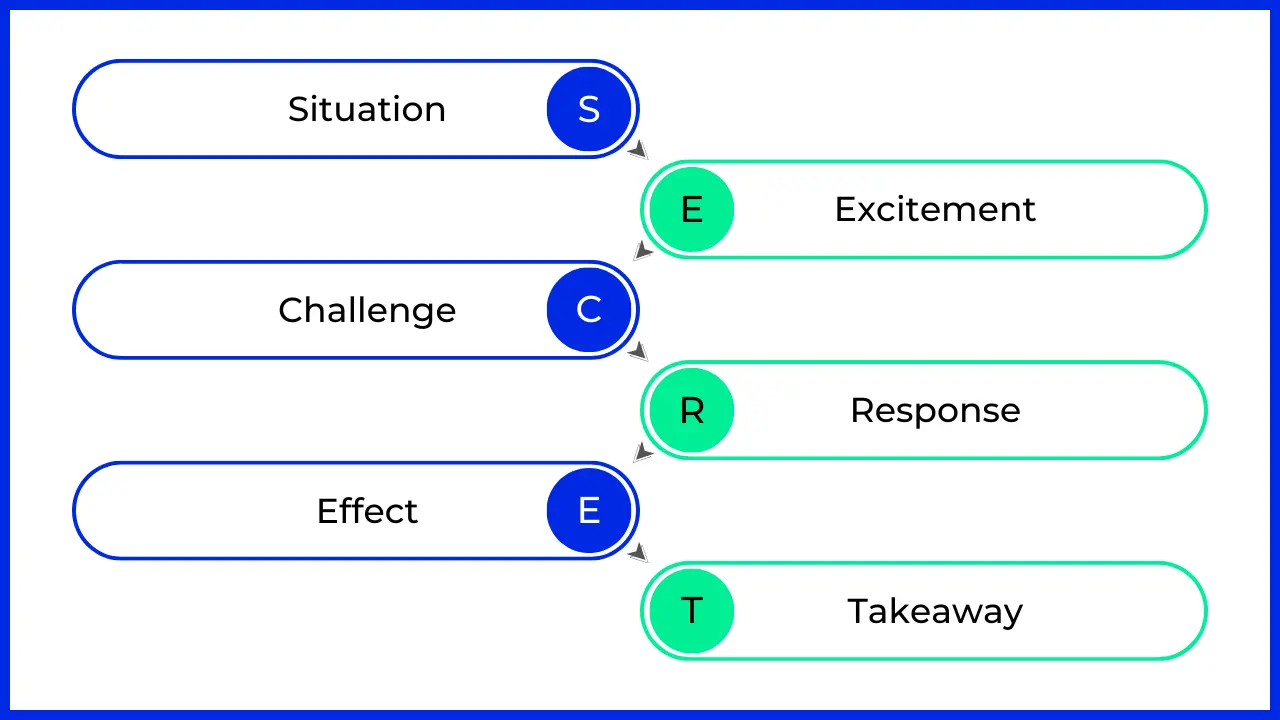
Set the scene. Where were you? What was happening?
❌ Bad example: “I was at work.”
✔️ Good example: “It was 2 AM, and I was staring at a glitching server that could cost our startup lakhs if not fixed by morning.”
See the difference? One puts you to sleep, the other hooks you in.
What got you pumped? What was at stake?
❌ Bad example: “I was excited about the project.”
✔️ Good example: “This project could either skyrocket my career or send me back to square one. The adrenaline was real!”
What hurdle did you face? What made it tough?
❌ Bad example: “It was difficult.”
✔️ Good example: “With zero budget, a team spread across three time zones, and a deadline tighter than a Mumbai local train at rush hour, this was my Everest.”
What did you do? Be specific!
❌ Bad example: “I worked hard to solve it.”
✔️ Good example: “I rallied the team on a midnight Zoom call, delegated tasks based on time zones, and personally coded for 36 hours straight, fueled by nothing but chai and determination.”
What happened as a result? Quantify if possible!
❌ Bad example: “The project was successful.”
✔️ Good example: “We launched on time, acquired 10,000 users in the first week, and got featured in YourStory. The CEO called it a ‘game-changer’ for the company.”
Now that’s an effect that makes Adcoms sit up and take notice!
What did you learn? How did it change you?
❌ Bad example: “I learned a lot.”
✔️ Good example: “This experience taught me that leadership isn’t about having all the answers, but about empowering your team to find them together. It’s a lesson I’ll carry into my MBA and beyond.”
See how it all comes together? That’s the power of the SECRET framework.
But here’s the million-rupee question:
How do you find these stories in your own life?
Glad you asked! It’s time to build your Story Bank.
Building Your MBA Story Bank: Turn Your Life into Essay Gold
Picture this:
It’s 11 PM. You’re staring at the essay prompt, wracking your brain for that perfect story.
Sound familiar?
Here’s the truth bomb: Great MBA essays aren’t written. They’re assembled.
And your Story Bank is your personal Lego set for building killer essays.
Here’s how to create yours:
- Grab a chai ☕ (or coffee, we don’t judge)
- Open a spreadsheet (or go old school with pen and paper)
- Set a timer for 20 minutes
- List EVERY professional and personal experience you can think of
Don’t hold back.
That time you organized a flash mob for your college fest? Put it down.
The day you convinced your traditional parents to let you pursue an offbeat career?
That’s gold.
The project where everything went wrong, but you learned a ton? Jackpot!
Now, here’s where the magic happens:
For each experience, jot down:
- The situation (2-3 words)
- The main challenge
- Your action
- The lesson learned
Congrats! You’ve just created your MBA Story Bank.
But we’re not done yet. Here’s the secret sauce:
Categorize each story based on the qualities it showcases:
- Global Mindset
Why? Because now, when you get that essay prompt asking about your leadership experience, you don’t panic. You’ve got 5 stories ready to go!
At Crackverbal, we’ve seen hundreds of applicants go from “I have nothing to write about” to “Which of these awesome stories should I choose?” with this technique.
Pro Tip: Keep adding to your Story Bank. Make it a habit. That project you’re working on right now? It could be your ticket to Harvard Business School!
Remember: Your experiences are unique. Your stories are powerful. And with the SECRET framework and your Story Bank, you’re armed and ready to craft essays that don’t just answer the prompt – they blow the Adcom away.
Tailoring Your Stories: One Size Doesn’t Fit All
Alright, future MBA mogul! You’ve got your Story Bank loaded with gems and you’re armed with the SECRET framework. You’re ready to conquer those essays, right?
Not so fast!
Here’s a truth bomb for you:
Sending the same essay to IIM Ahmedabad and Harvard Business School is like wearing a kurta to a black-tie event. It just doesn’t fit.
But don’t panic! I’m about to show you how to tailor your stories faster than your neighborhood darzi.
The Goldilocks Principle of MBA Essays

Remember Goldilocks? She didn’t want porridge too hot or too cold. She wanted it just right.
That’s exactly what the Adcom is looking for – stories that are ‘just right’ for their school.
Here’s how to nail it:
1. Do Your Homework (and no, we don’t mean JEE prep)
Before you write a single word, dig deep into the school’s:
- Core values
- Key programs
- Recent initiatives
- Famous alumni
Pro tip: Don’t just skim the website. Stalk their social media, read student blogs, chat with alums. Be the Sherlock Holmes of B-school research!
2. Find Your Hook
For each school, identify:
- What makes them unique
- How they’re different from their competitors
- What kind of students they seem to love
Example: Kellogg is crazy about teamwork. Wharton worships analytical skills. MIT Sloan is mad for innovators.
3. Connect the Dots
Now, here’s where the magic happens.
Look at your Story Bank and ask:
- Which of my stories best showcase the qualities this school values?
- How can I tweak my story to highlight aspects that align with this school’s culture?
Let’s see it in action:
Say you’re applying to ISB and INSEAD.
For ISB: Highlight how your experience starting a chai stall in college showcases your entrepreneurial spirit and understanding of Indian markets.
For INSEAD: Tweak the same story to emphasize how you collaborated with international students, showcasing your global mindset. Same story, different flavor!
4. Speak Their Language
Every school has its buzzwords. Use them (but don’t overdo it)!
- If the school talks about “transformative experiences”, show how your story transformed you.
- If they rave about “innovative leadership”, highlight how your actions were both innovative and showcased leadership.
- If “global perspective” is their jam, sprinkle in how your experience relates to international business.
But remember: Don’t force it. If you start sounding like a B-school brochure, you’ve gone too far!
5. The Secret Sauce: Show, Don’t Tell
Here’s where most applicants drop the ball.
They say, “I’m a perfect fit for your school because…” Snooze fest alert! 😴
Instead, SHOW them you’re a fit through your stories.
❌ Bad example: “I’m passionate about entrepreneurship, which aligns with Stanford’s values.”
✔️ Good example: “When I turned my mom’s pickle business into a thriving e-commerce startup, I realized I needed the skills Stanford’s Startup Garage could offer to take it global.”
See the difference? One tells, the other sells!
Crafting Killer Essays: From Hook to Mic Drop
Alright, future B-school legend! You’ve got your stories ready and tailored for each school. Now it’s time for the main event: actually writing that essay that makes the
Adcom go “Wow!”
But here’s the cold, hard truth:
Most MBA essays are about as exciting as watching paint dry in Delhi summer.
Ouch, right? But don’t worry, I’m about to show you how to turn your essay into a page-turner that the Adcom can’t put down.
The 5-Second Hook: Make Them Want More
Picture this: An Adcom member is sifting through their 50th application of the day.
Their eyes are glazing over. They reach for your essay and…
BAM! Your first line hits them like an auto rickshaw in Bangalore traffic.
That’s the power of a great hook. You’ve got 5 seconds to grab their attention. Make ’em count!
Here’s how:
1. Start with a bang, not a whimper
Boring: “I am writing this essay to apply for your MBA program.” (Well, duh! They know that already.)
Exciting: “The day I accidentally crashed the stock market simulation, I knew finance was my calling.” (Wait, what? Tell me more!)
2. Use the “Movie Trailer” technique
Think of your first line as a movie trailer. It should give a taste of the excitement to come, without giving everything away.
Example: “Three years ago, I was a failed entrepreneur with ₹50,000 in debt and a broken dream. Today, I’m leading a team of 50 at a unicorn startup. Here’s how it happened…”
Now that’s a story I want to read!
3. Ask a thought-provoking question
Get their mental gears turning right from the start.
Example: “What would you do if you had to choose between your dream job and saving your family business?”
Boom! They’re hooked.
Keeping Them Hooked: The “Spice Mix” Principle
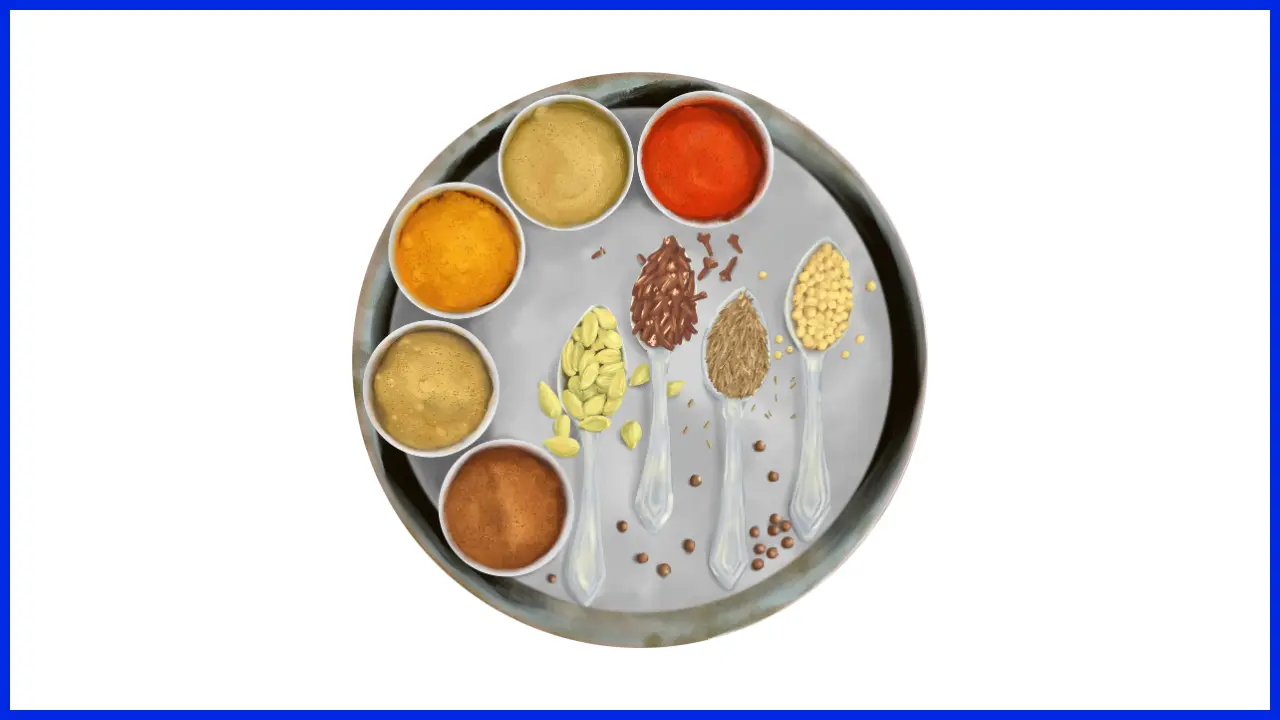
Ever noticed how a good biryani keeps you coming back for more? Each bite leaves you craving the next.
That’s exactly how your essay should flow. Here’s how:
1. Use the “One Punch” Paragraph
Keep your paragraphs short and punchy. One idea, one paragraph.
Long paragraphs are where attention goes to die. Don’t kill your reader’s interest!
2. Employ the “Curiosity Gap”
End each paragraph with a little cliffhanger that makes them want to read the next one.
Example: “Little did I know, that decision would change everything…”
3. Sprinkle in some “Masala”
Use vivid details and sensory language to bring your story to life.
Bland: “The project was challenging.”
Spicy: “With a team spread across three time zones, a budget tighter than an economy class seat, and a deadline breathing down our necks, this project was showing all signs of being my nemesis.”
4. The “Chai Break” Technique
Every few paragraphs, give your reader a moment to digest what they’ve read. A short reflection or a pivotal question works great.
Example: “In that moment, I realized leadership isn’t about having all the answers. It’s about…”
The Grand Finale: Stick the Landing
1. Bring It Full Circle
Reference your opening hook. Show how far you’ve come.
Example: “From crashing a stock market simulation to leading a ₹100 crore portfolio, my journey in finance has been anything but conventional. But it’s precisely this rollercoaster ride that’s prepared me for the challenges of your MBA program and beyond.”
2. The “So What?” Test
Answer the question: “So what does this all mean for your future MBA journey and career?”
Don’t just recap what you’ve done. Show how it’s shaped you and how it connects to your future goals.
Example: “These experiences haven’t just taught me about finance; they’ve shown me the power of resilience, innovation, and ethical leadership. These are the qualities I aim to further develop at [School Name], contributing my unique perspective to classroom discussions and learning from the diverse experiences of my peers.”
Here’s another example: “As I stand at this crossroads, ready to take the next leap in my journey, I’m excited about the possibilities that lie ahead at [School Name]. I’m not just seeking an MBA; I’m looking to be part of a transformative experience that will shape the future of business in India and beyond. And I can’t wait to bring my passion for innovative finance solutions to your classroom, your startup incubator, and eventually, to the emerging markets that need it most.”
The Secret Weapon: Emotion + Logic
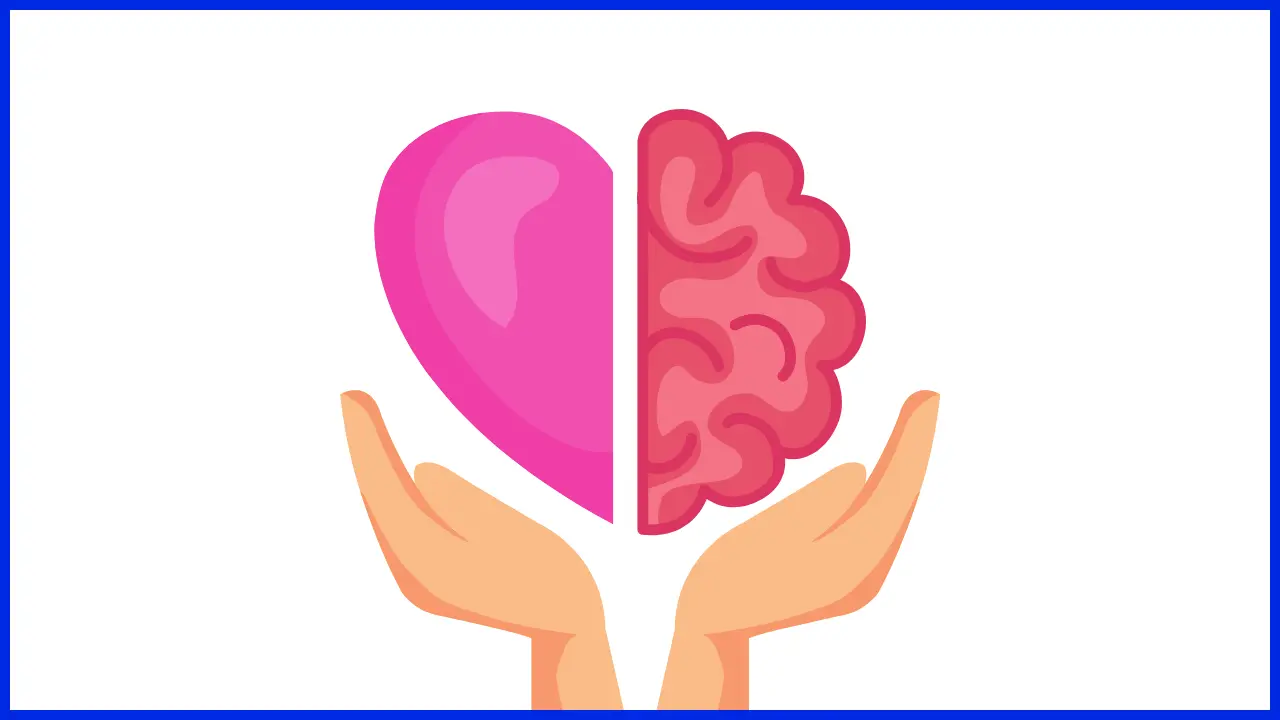
Here’s a trick we swear by at Crackverbal: The best MBA essays balance emotion and logic.
They tell a compelling story (emotion) while also showcasing your achievements and fit with the program (logic).
Think of it like a Bollywood blockbuster. You need the emotional drama to keep people engaged, but you also need a solid plot to tie it all together.
Here’s how to strike that balance:
1. The Emotional Core
Start by identifying the emotional heart of your story.
What drives you? What challenges have you overcome? What moments have defined your journey?
Example: “The day I saw my father’s small business crumble under poor financial management, I knew I had to do something. That mix of helplessness and determination became the fuel for my finance career.”
2. The Logical Framework
Now, build the logical structure around that emotional core. Show how your emotional journey has led to concrete achievements and skills that make you a great MBA candidate.
Example: “Driven by that early experience, I’ve spent the last five years building my expertise in financial management for SMEs. I’ve helped 50+ small businesses secure funding, implemented financial literacy programs that have reached 1000+ entrepreneurs, and even developed a mobile app for basic bookkeeping that’s been downloaded 10,000 times.”
3. The Future Projection
Finally, connect your emotional journey and logical achievements to your future goals and how the MBA fits into that picture.
Example: “Now, I’m ready to take my mission of financial empowerment to the next level. With [School Name]’s renowned Finance and Entrepreneurship program, I aim to gain the advanced skills and global perspective needed to develop innovative financial products for underserved markets. My ultimate goal? To launch a fintech startup that democratizes access to financial services for small businesses across Southeast Asia.”
The “ Chai Pe Charcha ” Review Process

You’ve written your essay. You think it’s pretty good. But before you hit that submit button, it’s time for the “Chai Pe Charcha” review process.
Here’s how it works:
1. The Friend Test
Share your essay with a friend over a cup of chai. Ask them to tell you what they understood about your story, your goals, and why you’re a good fit for the program.
If they can’t easily summarize these points, it’s time for a rewrite.
2. The Stranger Test
Now, share it with someone who doesn’t know you well. Ask them what impression they formed of you from the essay.
Is it the impression you want to give the Adcom? If not, time to revise.
3. The Time Test
Put your essay away for a week. Then read it again with fresh eyes.
Does it still excite you? Do you still agree with everything you’ve written?
If not, you know what to do.
4. The Pretend-to-be-from-the-Adcom Test
Read your essay pretending to be someone from the Adcom.
Does it answer their key questions? Does it make them want to meet you?
If not, it’s back to the drawing board.
The Crackverbal Edge: Professional Essay Review
Still not sure if your essay is Adcom-ready? Don’t stress.
At Crackverbal, we offer professional essay reviews that can take your writing from good to great. Our experts have years of experience and know exactly what top B-schools are looking for.
Pro tip: Read your essay out loud. If you stumble over any sentences or run out of breath, that’s a sign you need to simplify and clarify.
Your Mission: The Essay Makeover Challenge
Ready to put all this into practice? Here’s your mission:
- Take an existing MBA essay you’ve written (or write a new one using the techniques we’ve discussed)
- Apply the “5-Second Hook” technique to your opening
- Use the “Spice Mix” Principle to keep the reader engaged throughout
- Craft a powerful conclusion using the “Grand Finale” tips
- Balance emotion and logic throughout your essay
- Put it through the “Chai Pe Charcha” review process
- Revise and refine until it shines!
Remember: A great MBA essay isn’t just born. It’s made through multiple drafts, ruthless editing, and a willingness to dig deep and share your authentic self.
Conclusion: Your MBA Essay Masterpiece Awaits
Congratulations, future MBA superstar!
You’ve made it through the ultimate guide to crafting compelling MBA essays. Let’s do a quick recap of your journey:
- You’ve learned to decode MBA essay prompts like a pro
- You’ve mastered the SECRET framework for powerful storytelling
- You’ve built your own Story Bank, turning your life into essay gold
- You’ve discovered how to tailor your stories for different schools
- You’ve learned the art of crafting killer essays from hook to conclusion
But here’s the thing: This is just the beginning of your MBA application journey.
- Your unique experiences are your secret weapon. Use them wisely.
- Every story in your life, no matter how small, can be essay gold if you know how to mine it.
- The best essays aren’t written—they’re rewritten, polished, and perfected.
So, what’s next?
It’s time to put these tools into action. Get right into your Story Bank, craft those essays, and start your journey to B-school success.
But if you find yourself stuck, or if you want that extra edge to make your application truly stand out, remember: You don’t have to do this alone.
At Crackverbal, we’ve helped thousands of applicants just like you turn their unique stories into admit-winning essays. Our MBA Essay Mastery Workshop and personalized Essay Review services are designed to give you that extra boost.
Ready to transform your MBA dreams into reality?
Your next chapter awaits. Let’s write it together!
In this blog, we'll discuss...
- The “SECRET” framework to writing winning essays
- Building a “story bank” to make writing a breeze
- The “Chai pe Charcha” technique for unforgettable essays
Start with a Free Profile Evaluation Today
Top 10 FAQs: MBA Essay Writing and Storytelling Techniques
1. how long should an mba application essay be.
Most MBA essays have word limits between 400-750 words. Always adhere to the specific word count given by each school. Quality is more important than quantity, so focus on conveying your message concisely and effectively within the given limit.
2. What is the SECRET framework for MBA essays?
The SECRET framework stands for Situation, Excitement, Challenge, Response, Effect, and Takeaway. It’s a storytelling structure that helps applicants craft compelling narratives in their MBA essays by ensuring they cover all crucial elements of a strong story.
3. How do I choose which stories to tell in my MBA essays?
Choose stories that highlight your leadership, problem-solving skills, and unique perspectives. Create a “Story Bank” of your experiences and select those that best align with the essay prompt and showcase your fit with the program. Ensure your stories demonstrate personal growth and relevance to your MBA goals.
4. How can I make my MBA essay stand out?
Make your essay stand out by using vivid storytelling techniques, showcasing your unique experiences and perspectives, and clearly connecting your past experiences to your future goals. Use specific examples and quantifiable achievements. Tailor your essay to each school, demonstrating your fit with their unique culture and programs.
5. Should I mention weaknesses in my MBA essay?
It’s okay to mention weaknesses if you can demonstrate growth and learning from them. Focus on how you’ve addressed these weaknesses and the positive outcomes that resulted. Always end on a strong note, emphasizing your readiness for the challenges of an MBA program.
6. How do I start my MBA essay?
Start your MBA essay with a hook that grabs the reader’s attention. This could be a surprising statement, a vivid scene, or a thought-provoking question. Ensure your opening is relevant to the overall message of your essay and sets the tone for your story.
7. How do I tailor my essay for different MBA programs?
Research each program thoroughly and identify unique aspects that align with your goals. Customize your essays by referencing specific courses, professors, clubs, or initiatives that interest you. Show how these program-specific elements fit into your career plans and how you’ll contribute to the school community.
8. What is the "Chai Pe Charcha" test for MBA essays?
The “Chai Pe Charcha” test involves imagining you’re having a casual chai (tea) chat with a student from your target B-school. If you can tell your story in an engaging, conversational manner that convinces them you belong at their school, your essay is likely on the right track.
9. How important is the conclusion in an MBA essay?
The conclusion is crucial as it’s your last chance to make an impression. Use it to tie your story together, reaffirm your fit with the program, and leave the reader with a clear understanding of your goals and potential contribution to the MBA class. End with a forward-looking statement that leaves the admissions committee excited about your future.
10. Should I use the same stories for all my MBA applications?
While you can use the same core stories across applications, always tailor them to each specific school and essay prompt. Highlight different aspects of your experiences that align with each school’s values and programs. Ensure that each essay feels fresh and specifically written for that particular school.
Written by Arun J.
Submit a comment cancel reply.
Your email address will not be published. Required fields are marked *
Submit Comment
You May Also Like…

Bridging the Gap: MBA Applications with Employment Breaks
Jul 24, 2024
In today’s dynamic career landscape, employment gaps are becoming increasingly common. Whether due to layoffs,...

From Founder to Student: Crafting Standout MBA Applications for Entrepreneurs
As an entrepreneur or family business owner, you bring a unique perspective to the MBA applicant pool. Your hands-on...

Overcoming Academic Hurdles: Tackling MBA Applications with a Low GPA
A less-than-stellar undergraduate GPA can feel like a significant obstacle in your MBA journey. However, it’s...
Talk To Your Advisor[ninja_form id=]
- Essay Editor
Farewell to Our Raccoon Mascot

Hello, Aithors! We have some bittersweet news to share with you today. As Aithor continues to grow and evolve into a multipurpose tool, we've decided it's time to say goodbye to our beloved raccoon mascot.
Our raccoon symbolized wisdom and curiosity, qualities we hold dear. However, we also understand that raccoons can sometimes be associated with theft and trickery, which doesn't align with the values we want to convey as we expand our horizons.
As we transition away from the raccoon, we're excited to introduce new elements that better represent our mission of making the writing process seamless, reliable, and innovative. We believe this change will help us connect more deeply with our diverse and growing community of users.
Thank you for your continued support and understanding as we make this transition. We can't wait to share more updates with you soon. Happy writing, Aithors!
Related articles
How to write a good conclusion: outline and examples.
Writing a well-structured and insightful concluding paragraph is akin to putting the final cherry on top of a delicious cake – it completes the experience and leaves a lasting impression. Whether you are crafting a paper, a report, or research, creating a persuasive closing paragraph can significantly enhance your work’s influence. This guide delineates the specifics of how to write a conclusion, explores the essential elements of a closure, offers strategies for writing one that resonates, and ...
How to Write a Methodology in a Research Proposal
In academic research, crafting a solid methodology is crucial, acting as the foundation for a reliable study structure. It provides the framework that guides the investigation towards addressing research questions and achieving study objectives. Understanding ‘What is methodology in research?’, the components it entails, its efficient organization, and the essential steps required, is vital for aspiring academics. This comprehensive guide explores the intricacies of accurately generating a meth ...
How to Start an Essay with a Quote
Starting an essay with a quote is more challenging than picking some excellent words from a famous person. It's about finding words that make people want to read more. You may have tried before and ended up with something that didn't sound very serious. Don't worry; lots of people have this issue. This article will help you choose and use the best quote to begin your essay. Helpful Tips for Starting Your Essay with a Quote Using a quote at the start of your essay can get your reader's attenti ...
How to Write About Yourself: Basic Tips & Examples
Writing about yourself isn't always easy, but it is definitely an important skill to have. You might need to do this for a school application, a job, or just to understand yourself better. When you think about how to start an essay about yourself, it's good to consider what makes you special. What has happened in your life that's important to you? What do you care about? These questions can help you find the main parts of your story to share. Why Writing About Yourself Matters Writing about w ...
A Guide to Writing a Great Short Essay
As a student, you're no stranger to the countless writing assignments your teachers toss your way. When you see that your next assignment is a short essay, you might think, "Oh, this will be easy!" I mean, it's only a few hundred words, right? How hard could it be? But here's the thing: writing a short essay can sometimes be even harder than writing a longer paper. So, let's work together and figure out how to make your short essays really stand out! The Basics of a Short Essay Format A short ...
Effective Transition Words for Structured, Flowing Essays
Have you ever encountered an essay that flowed seamlessly, through a clear and logical path? That smooth flow is often achieved through the skillful use of connectors. Transition words, also identified as connectors, are the unrecognized heroes of succinct, cohesive writing, effortlessly leading attentive readers from one part to another. The correct usage of connectors also reflects the quality of your composition. In this instructional guide, let’s look at the importance of linking words, exam ...
3 Paragraph Essay: Structure and Writing Guide
There is a wide range of challenging and interesting writings in academic assignments. A 3 paragraph essay is highly rated in this list. What is the purpose of this project? What parts should be there? How to organize material correctly? These questions will be discussed in the article. The purpose of the 3 paragraph essay is to show a student's ability to fit a topic interpretation in a limited amount of words. This format is usually used for summaries, argumentative essays, and other papers, ...
Rhetorical Analysis: A Comprehensive Guide
A rhetorical analysis essay is a part of the AP English Language and Composition exam. Due to its unorthodox purpose, rhetorical analysis can be hard to master at first. This article will help you understand what a rhetorical analysis essay is, learn about main rhetorical analysis strategies, and find out how to write a rhetorical analysis. What is a rhetorical analysis? As you can probably guess, a rhetorical analysis is a type of analytical essay. Alongside a synthesis essay and argument es ...
The Higher Education Review

- Engineering
- Jobs and Careers
- Media and Mass Communication
- Education Consultancy
- Universities

Different Ways To End Your Essay Without Saying "In Conclusion"
Download now complete list of top private engineering colleges.

IMAGES
VIDEO
COMMENTS
Learn how to write a strong conclusion paragraph with powerful sentences or statements using various conclusion starters. Find out the best conclusion starters for different types of essays and research papers, such as compare and contrast, narratives, descriptive, and argumentative.
Learn how to end your essays and speeches with effective conclusion starters that summarize, restate, or call for further action. Find examples of different types of conclusion starters for formal and informal writing.
Step 1: Return to your thesis. To begin your conclusion, signal that the essay is coming to an end by returning to your overall argument. Don't just repeat your thesis statement —instead, try to rephrase your argument in a way that shows how it has been developed since the introduction. Example: Returning to the thesis.
1. Start with a transition sentence. If you are writing a conclusion to an essay or paper for school or college, it's important to understand the functions of the conclusion. Your conclusion shouldn't only restate the main points of your argument in a way that is disconnected from the rest of the text.
Highlight the "so what". At the beginning of your paper, you explain to your readers what's at stake—why they should care about the argument you're making. In your conclusion, you can bring readers back to those stakes by reminding them why your argument is important in the first place. You can also draft a few sentences that put ...
Also read: How to Write a Thesis Statement. 2. Tying together the main points. Tying together all the main points of your essay does not mean simply summarizing them in an arbitrary manner. The key is to link each of your main essay points in a coherent structure. One point should follow the other in a logical format.
Let's go through each step. 1. Understand the Purpose. The conclusion is your final opportunity to leave an impact. It should tie together your main ideas, reinforce your message, and give the reader a sense of closure. Wrap Up Your Main Ideas. The conclusion should succinctly wrap up the main points of your writing.
The conclusion allows you to have the final say on the issues you have raised in your paper, to synthesize your thoughts, to demonstrate the importance of your ideas, and to propel your reader to a new view of the subject. It is also your opportunity to make a good final impression and to end on a positive note.
1. Return to Your Thesis. Similar to how an introduction should capture your reader's interest and present your argument, a conclusion should show why your argument matters and leave the reader with further curiosity about the topic. To do this, you should begin by reminding the reader of your thesis statement.
In this video, you'll learn how to write a strong essay conclusion paragraph that ties together the essay's main points, shows why your argument matters, and...
Consider evoking emotions relevant to your topic when you want to know how to write a conclusion paragraph that tugs at the reader's heartstrings. Consider a Quote (if Relevant): A powerful quote from a credible source can add authority and depth to your essay conclusion. Ensure the quote aligns with your thesis and enhances your message.
End your essay with a call to action, warning, or image to make your argument meaningful. Keep your conclusion concise and to the point, so you don't lose a reader's attention. Do your best to avoid adding new information to your conclusion and only emphasize points you've already made in your essay. Method 1.
The first steps for writing any college essay are coming up with a strong thesis statement and composing a rough introduction.Once you've done that, you can collect information that supports your thesis, outline your essay's main points, and start writing your body paragraphs.Before you can submit the essay, though, you'll also need to write a compelling conclusion paragraph.
When wondering how to write a conclusion, it boils down to this: Conclusions should round off the topic and leave a strong impression in the readers' minds. We show you three key elements to a memorable conclusion.
Essay Conclusion Examples. Below is a range of copy-and-paste essay conclusions with gaps for you to fill-in your topic and key arguments. Browse through for one you like (there are 17 for argumentative, expository, compare and contrast, and critical essays). Once you've found one you like, copy it and add-in the key points to make it your ...
This article provides an effective technique for writing a conclusion adapted from Erika Eby's The College Student's Guide to Writing a Good Research Paper: 101 Easy Tips & Tricks to Make Your Work Stand Out.. While the thesis introduction starts out with broad statements about the topic, and then narrows it down to the thesis statement, a thesis conclusion does the same in the opposite order.
Here are the important characteristics for effective conclusion starters: Sum up all relevant information, ideas, and examples, without adding any new information; Effectively link the rest of the body to the conclusion paragraph; Few words that introduce the first sentence of the concluding paragraph; Set the reader's expectation by clarifying ...
Establish a sense of closure. You want your reader to know that they have reached the end of your paper. The wording and content of your conclusion paragraph should make this clear. There are a few ways that you can establish a sense of closure. [6] Try connecting the last paragraph to the first.
Keep the tone of your conclusion consistent with the rest of the essay. For example, if your essay has been primarily formal and academic, maintain that tone in the conclusion (e.g., avoid closing with an informal anecdote or a witty observation). End With a Thought-Provoking Statement. End your conclusion with a thought-provoking statement or ...
An effective conclusion is created by following these steps: 1. Restate the thesis. An effective conclusion brings the reader back to the main point, reminding the reader of the purpose of the essay. However, avoid repeating the thesis verbatim. Paraphrase your argument slightly while still preserving the primary point.
Don't be afraid of rhetoric when you're looking to conclude an essay - make the biggest, boldest pitch you can for the value of what you've argued. Do pull it all together. When you conclude an essay, you're not only trying to convince your reader of the merit of your individual points or body paragraphs.
Example: "In a nutshell, there are valid arguments on both sides of the debate about socialism vs capitalism.". 18. In closing…. My Rating: 7/10. Overview: This phrase is an appropriate synonym for 'In conclusion' and I would be perfectly fine with a student using this phrase in their essay.
Discover the art of crafting captivating essay conclusions that leave a lasting impact. Learn how to restate your thesis, summarize key points, evoke emotions, and offer recommendations. Explore examples and gain valuable insights in this comprehensive guide. Elevate your writing skills with 29+ Essay Conclusion Examples in PDF.
Conclusion: Your MBA Essay Masterpiece Awaits. Congratulations, future MBA superstar! You've made it through the ultimate guide to crafting compelling MBA essays. Let's do a quick recap of your journey: ... Start your MBA essay with a hook that grabs the reader's attention. This could be a surprising statement, a vivid scene, or a thought ...
Helpful Tips for Starting Your Essay with a Quote Using a quote at the start of your essay can get your reader's ... 2024 How to Write a Good Conclusion: Outline and Examples. Writing a well-structured and insightful concluding paragraph is akin to putting the final cherry on top of a delicious cake - it completes the experience and leaves a ...
Here is a list of different ways…different approaches to ending your essay. The shift from the main body to the conclusion is a . It is so because, in this section, you are supposed to roll back your points and converge them toward a dot. You can use transitional words like "all in all," "Ultimately," "As a consequence," "furthermore," "In ...